Disney Heroines and Gaslighting
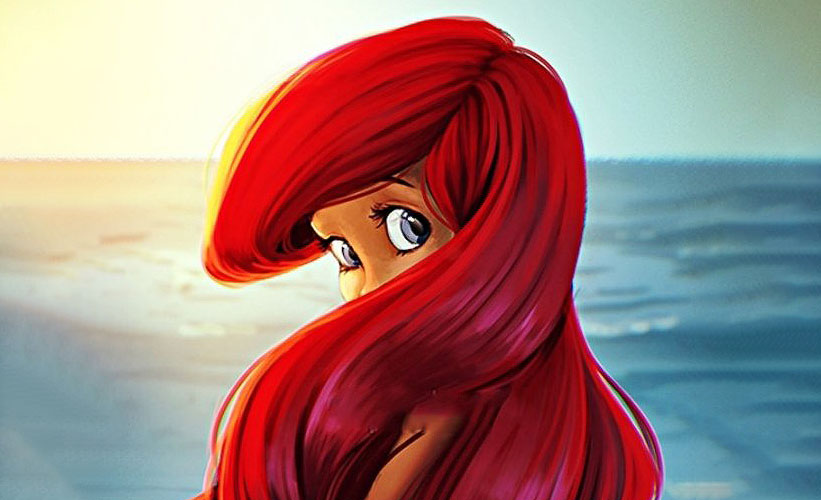
“Gaslighting” or “gaslit” refers to the practice of “[manipulating] someone by psychological means into questioning their own sanity” (Oxford Languages). Merriam-Webster expands on this definition, pointing out gaslighting usually happens slowly over an extended period. It’s a common abuse tactic wherein the abuser focuses on controlling the victim. While it is often associated with couple relationships, gaslighting can happen in any relationship, such as between friends and family members. Many people don’t know they’ve been gaslit until they’re away from their abusers, if they ever realize it. This occurs because gaslighting is so insidious. The gaslighter’s whole purpose lies in making his or her victim feel as if they’re the one with the problem, as if they’re the one who’s distorting reality, misunderstanding, or “acting crazy.” Thus, the victim of gaslighting often feels the abuse is normal and they are in fact the one with the problem. If anything, a gaslit victim may feel they’re the abusive one, because in calling out the abuser, they’re being hateful.
Gaslighting hasn’t always been recognized the way it should. In fact, the term itself wasn’t used until about 1944, in reference to the film Gaslight, wherein a husband uses the technique to convince his wife she is mentally ill. Note that this was about 80 years before twenty-first century psychology. However, especially in the 2020s, gaslighting is recognized, called such, and dealt with more effectively. And while gaslighting, like psychology, might be considered an “adult” topic, it’s becoming more prevalent in media aimed at children.
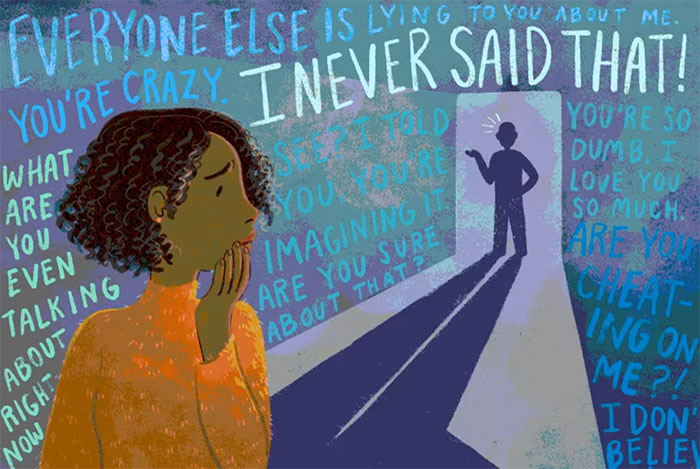
One of the most common places children get exposed to gaslighting is Disney, particularly among feminine-centric films. At least five major Disney heroines, princesses and non-princesses alike, have experienced gaslighting, both at the hands of abusers and more well-meaning people in their lives. It’s debatable whether Disney ever meant the psychological phenomenon to be this common. Certainly, the Disney canon is not a piece of media on which to stake an entire psychological philosophy or career. However, the constant presence of gaslighting among Disney heroines has a lot to teach kids and adults about what gaslighting is, who it happens to and why, and what the animated and real worlds are doing, or sometimes not doing, about it.
For the purpose of our discussion, a character qualifies as a Disney heroine if she’s female and has either a protagonist or deuterotagonist role in her associated film (s). She may be part of the Disney princess line, but this isn’t required. A Disney heroine qualifies as gaslit if a villain or other character makes her question her sanity, character, or perception of reality in any way, whether or not this is meant as abuse. The heroine also qualifies as gaslit if overcoming the gaslighting is a major part of her character arc, whether or not anybody acknowledges the gaslighting.
Why Heroines and Not Heroes?
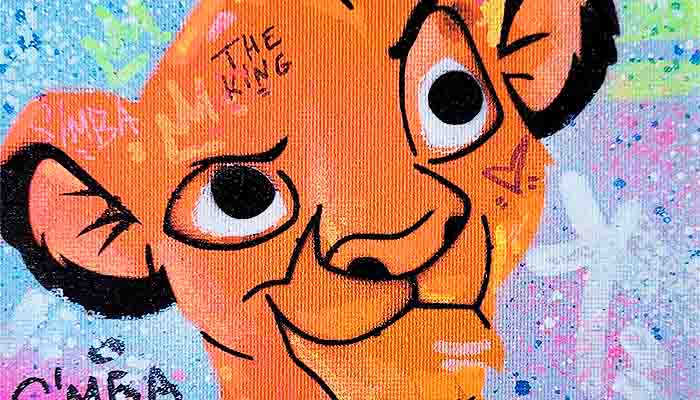
This is a fair question, and one we should address before proceeding with our discussion. After all, plenty of male Disney heroes experience some level of gaslighting. Simba of The Lion King is gaslit into jeopardizing, then giving up, his entire kingship and destiny from the time he’s a cub. Uncle Scar convinces Simba, for example, that kingship means bravery and recklessness, and that his father Mufasa would want him to show bravery by getting into dangerous situations. Later, Scar outright tells Simba he caused Mufasa’s death and should thus give up kingship–“run away and never return”–because he is unworthy of it. Ralph of Wreck-it Ralph is gaslit into believing he can never be a good guy, thanks to Nicelander Gene and later, twist villain King Candy. In Toy Story 3, Lotso Huggin’ Bear gaslights Woody, Buzz, and friends into thinking they’re safe at the prison stand-in Sunnyside Daycare because getting involved with an owner just means more heartbreak and putting off the inevitable trip to the landfill. (The Toy Story 3 cast is a mixed group, but male characters Buzz and Woody are the leaders, and males outnumber females about 5 to 3). Why then, should a discussion of gaslighting in Disney focus on heroines?
It’s true, finding statistics that prove women are gaslit more frequently than men, and thus, have more representation in media, is difficult. However, if media viewers explore gaslighting and women, they’ll find women are gaslit across more situations than men. In fact, one could argue women are vulnerable to gaslighting in every area of their lives. Just for one example, the online publication Bustle points out seven distinct areas where women are commonly gaslit. Some areas are physical or external; Bustle writer Suzannah Weiss says women are commonly “told their health problems are all in their heads” or “dismissed when they speak out about sexism,” especially at work (Weiss). However, women are also commonly gaslit in terms of emotions and internal experiences. Weiss writes, “If a man raises his voice in anger, he’s considered authoritative. If a woman does the same, she’s deemed emotional or hysterical and told to calm down” (Weiss). She also writes that women are “shamed for standing up for themselves” and placed in situations where “[they] end up apologizing…when hurt or mistreated” (Weiss). At times, women’s physical health concerns are even deemed, not just “all in their heads” but cognitive detriments. For example, if a woman admits to experiencing pre-menstrual syndrome (PMS), she’s often passed off as having “that time of the month” and thus, unworthy of being taken seriously (Weiss).
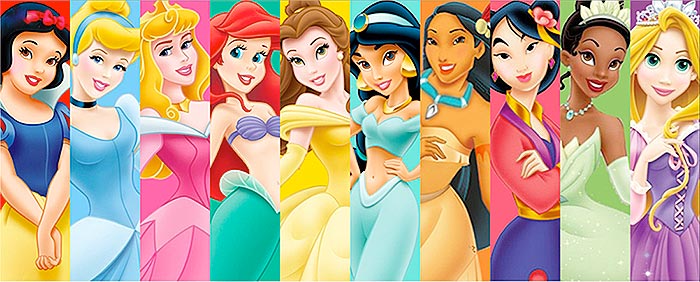
Remember that according to Merriam-Webster, these situations can happen across all relationships or situations, not just external ones like the workplace. Also, note that especially in our Disney examples, men are more likely to be gaslit because of something they’ve done, failed to do, or can’t do (Simba’s vulnerable because his youth means he can’t stand up to Scar; Ralph tries and fails to prove he’s a good guy; Buzz and Woody can’t overpower Lotso’s system on their own, nor is that expected). In other words, men are gaslit based on accomplishment and related externals, not who they are as people or how they process situations. Women, on the other hand, are gaslit based on who they are as people–their emotions, their processing, their responses or lack thereof, as we’ll see with our Disney heroines. This places women, and for our discussion Disney women, in a more vulnerable and urgent position than men. That position means media and its consumers can and should be called upon to define and analyze gaslighting for heroines. They should also be called upon to use those examples to teach and empower real-life little girls who can grow up into women who recognize gaslighting and don’t become victims.
Cinderella: The Gaslighting Pioneer
When viewers first think of gaslighting and Disney, they might think of Cinderella, as they should. Cinderella’s eponymous film came out in 1950, just 6 years after the psychological term got any attention. So while psychologists who saw the movie probably recognized Cinderella as a victim of abuse, they may or may not have named gaslighting as a specific part of said abuse. Finding and responding to the gaslighting takes fairly deep, adult-level analysis. Such analysis naturally leads to solid conclusions about the heroine’s abusers. Disturbingly though, it can lead to some dark conclusions about Cinderella herself, too.
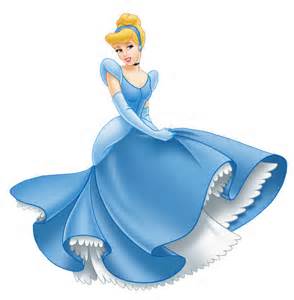
Cinderella’s stepmother is the natural place to begin when discussing gaslighting in Cinderella. The stepmother, or Lady Tremaine as she’s formally known, is an expert gaslighter. Part of what makes her so expert, and so chilling, is that she’s subtle in gaslighting. That is, viewers in Cinderella‘s target audience will instantly recognize Tremaine as a cold, mean person because she makes Cinderella do endless chores, blames her for things her stepsisters or Lucifer the cat do (ex.: placing a mouse under a teacup) and breaks her promises (Cinderella can go to the ball if she does her work and dresses suitably). Target audience members may recognize there’s something wrong in the smooth, underhanded way Tremaine acts around Cinderella, even if they don’t know the term “gaslighting.”
Adult audience members, however, will more quickly recognize Tremaine is more than “mean” as a child defines it. She doesn’t just blame Cinderella for the teacup incident; she insinuates Cinderella was considering it because “we have time on our hands…for vicious practical jokes.” In other words, Cinderella feels vengeful toward her innocent stepsisters and premeditated a way to hurt them. In another example, Lady Tremaine tells Cinderella she can go to the royal ball if she completes her chores and can find appropriate attire.
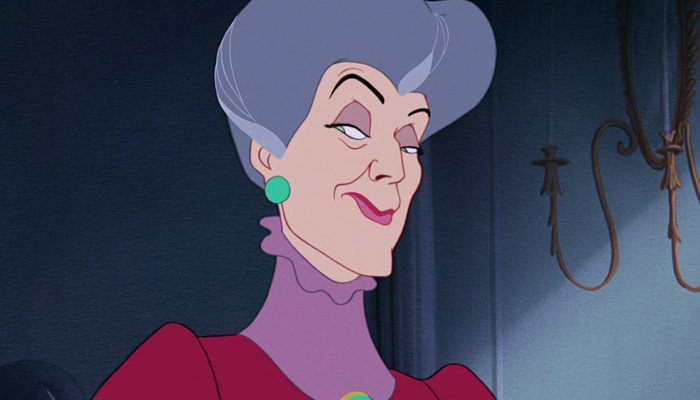
But as Tumblr user Lion Badger points out, Tremaine’s real agenda involves making Cinderella do things she knows are impossible. He goes on to say Tremaine’s next reaction is, “Oh, you did do them? Well, you must have cheated somehow or stolen from us,” as seen when Anastasia and Drizella accuse Cinderella of stealing their discarded beads and sash (wisteria-lodge.tumblr). In other words, Cinderella is the one with the problem. She is morally inferior, a thief and a cheater. By extension, since she allegedly, somehow, managed to do what her stepmother asked, she must’ve done a shoddy job. Her outdated dress proves she did a shoddy job, because if she hadn’t, it wouldn’t have been so easily torn to shreds.
When Gaslighting Becomes “Kindness”
Lion Badger’s analysis takes the gaslighting of Cinderella one step further, claiming “her new sense of self is made of glass” (wisteria-lodge.tumblr). In other words, Cinderella gets the tools to go to the ball through her Fairy Godmother, who tells her she is good and worthy to go, and who makes going physically possible. Later, Cinderella keeps one glass slipper, “the talisman to prove [her experience] was real” (wisteria-lodge.tumblr). But it can’t last, because Lady Tremaine’s gaslighting goes too deep. Lion Badger points out that Cinderella knows what her prince sees is just a disguised pumpkin and a ragged dress in disguise. She can put on a great face, but is in the throes of imposter syndrome (wisteria-lodge.tumblr).
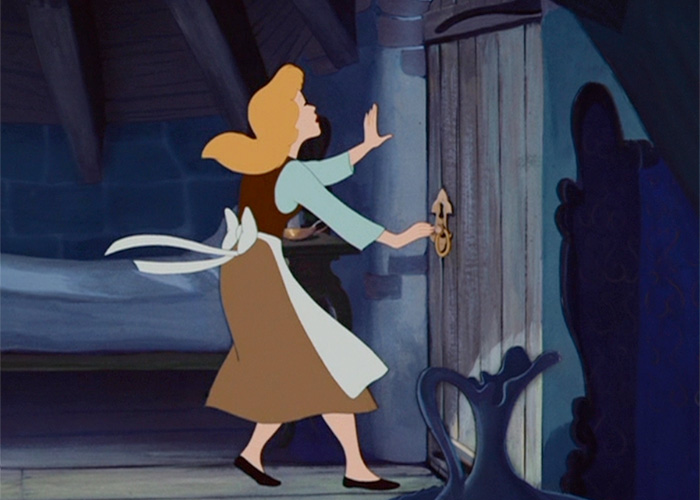
Again, kid viewers may not understand this fully. But when adult viewers see Cinderella crying piteously and insisting, “You can’t keep me in here” (emphasis mine), they’ll see another layer to the situation. Cinderella experienced the ball. She experienced the prince’s attention, regard, and respect. She has physical proof this was real, that her real identity is the good and worthy person her Fairy Godmother and the prince see. But she’s been told the opposite for years, apparently since early childhood. She’s been placed in situations where she is the aggressor, the abuser, the thief of her stepsisters’ happiness. So when Cinderella needs her talisman and the truth of her experience, she can’t hold onto them. They shatter like glass. As with the Fairy Godmother, it takes physical action and evidence on the part of someone else–in this case, the mice–to get Cinderella to entertain the notion of worthiness. She can’t rely on verbal affirmations or intrinsic truth, the way a well-adjusted person can. Her environment, and the sum of her experiences–wherein bad far outweigh good–won’t allow it. Instead, Cinderella either relies on others to get her out of bad situations, or accepts that people like Lady Tremaine have all the control.
These conclusions are disturbing enough. Yet Cinderella’s gaslighting has another layer. It has negatively changed her character, perhaps for good. Of course, Cinderella is the furthest thing from a villain or an abuser, if we go by basic connotations. However, small incidents in her life before the ball show the gaslighting she has experienced is so entrenched, she has actually learned to use it with other, more innocent beings. Lion Badger points out the early scene where Cinderella observes her dog Bruno dreaming about chasing Lady Tremaine’s cat Lucifer–again. “That’s bad,” she tells him. “You better get rid of those dreams…just learn to like cats.” Lion Badger writes, “Bruno is dreaming of aggression…of freedom…and Cinderella shuts it down” (wisteria-lodge.tumblr). She’s shutting down not only Bruno’s feelings about Lucifer, which are completely valid, but his instincts as a dog. When Cinderella tells Bruno, “just learn to like cats,” we hear a dark echo. “Just accept the way you’re treated. Just learn your stepmother and stepsisters are better than you. Learn they have and deserve control.”
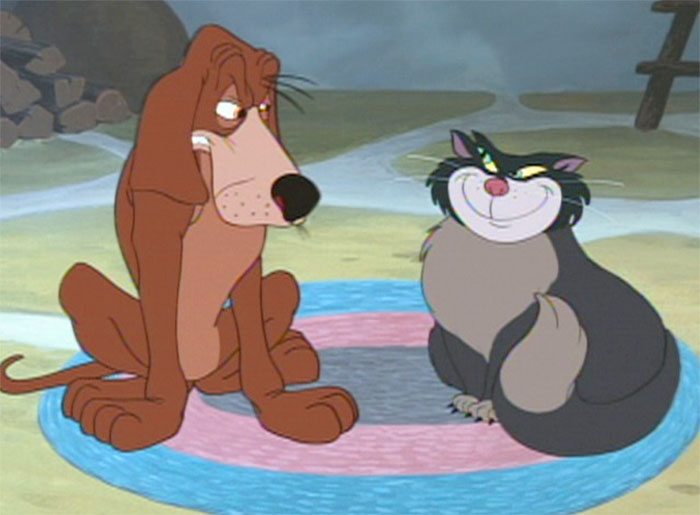
The echo gets darker when Lucifer slinks into the kitchen and swipes at Bruno. Bruno swipes at him in self-defense, and Lucifer lets out a howl, “[playing] the victim” (wisteria-lodge.tumblr). Cinderella sends Bruno outside, and Lucifer takes his warm, comfy spot on the carpet. The aggressor is rewarded, while the actual victim is blamed, shamed, and isolated.
Viewers could write off this incident as a simple mistake. After all, Cinderella had her back turned; she didn’t see who swiped who. But whether or not she witnessed the incident is actually a non-issue. Bruno is Cinderella’s lifelong pet, as we see from a still early in the film. Lucifer is Lady Tremaine’s pet, who has been in Cinderella’s home for a shorter time and thus, has had less time to acclimate and prove himself. More importantly, Cinderella knows from experience that what Lucifer has proven himself as, is a sneaky troublemaker. He’s also clearly allied with Cinderella’s biggest and most powerful adversary.
True, a dog and cat can’t be held to the same intellectual or moral standards as a human, and Cinderella has no time or inclination to psychoanalyze their dynamic. But the fact that she immediately blamed and isolated a lifelong ally, and sided with a party she knows is likely playing the victim, is a red flag. It shows that like many abuse victims, Cinderella has accepted her situation as normal. Worse, she has accepted gaslighting as a normal response. That is, if someone does something you don’t like, or that you think will upset your status quo, just make them feel like they are the lesser party. We see this in the way Cinderella coaches Bruno to “get rid of” his dreams of chasing Lucifer and standing up for himself. Again, the real message is one to herself: “Squash any impulse to ‘swipe back,’ if you want to maintain the life you have, because there’s probably not an alternative.” It’s also a message to others: “I’m in a worse place than you, so you better not mess up the tenuous hold I’ve got on security.”
Is Cinderella’s Gaslighting Rewarded?
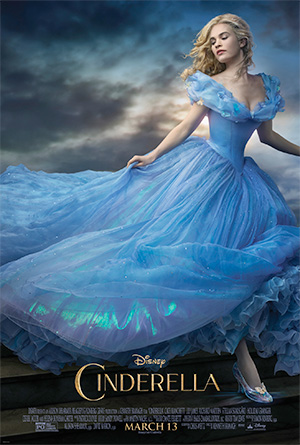
The 2015 live-action remake of Cinderella doesn’t show our heroine gaslighting her animal friends. However, the remake takes the whole concept of gaslighting further than its animated predecessor, both for Cinderella and Lady Tremaine.
In the remake, Lady Tremaine’s gaslighting maintains its sneaky, covert nature while becoming more overt. For instance, she doesn’t immediately make Cinderella a full-fledged servant after our heroine’s father dies. Rather, she “suggests” Cinderella would enjoy doing certain household chores, and gradually adds to their number. She ensures Cinderella won’t protest her workload by insinuating that to do so would be refusing to help the family. Later, Lady Tremaine coaches Cinderella to eat in the kitchen, after everyone else and separately from them, so Cinderella allegedly won’t have to exhaust herself or keep up with her stepmother and stepsisters’ conversation. Through these gentle but barbed “suggestions,” Cinderella’s segregation and separation becomes normal. Cinderella doesn’t even question it when Lady Tremaine literally gives her nothing but table scraps. We don’t hear the gaslighting connected to this, but we can infer that again, Lady Tremaine made it seem as if the scraps were enough, that it was best for Cinderella to eat them, or that they were her due because she did or failed to do something.
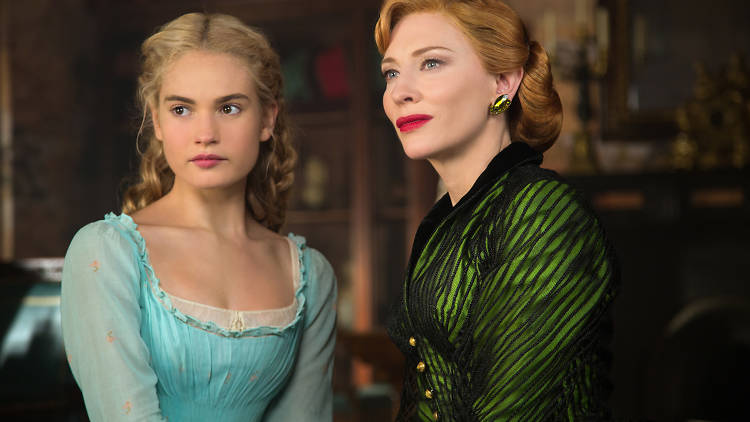
The remake’s Cinderella is a bit spunkier than her animated counterpart. She actually meets and converses with the prince before the ball, leaves her house, and maintains friendships with fellow villagers. Thus, viewers might expect her to respond more assertively to gaslighting. But just as Lady Tremaine’s gaslighting is more overt in the remake, so too is Cinderella’s capitulation. For instance, when Lady Tremaine says, “A ragged servant girl is…what you will always be,” Cinderella raises absolutely no protest. If anything, this statement fuels her breakdown later, when Tremaine and the stepsisters tear her dress and leave her behind for the ball. (Note that unlike in the animated Cinderella, the dress is visibly torn in one spot, not completely destroyed. This removes the weight from Cinderella’s response and drives home how fragile and passive she is, not how she could become stronger).
Once Cinderella makes it to the ball and catches the prince’s eye, viewers might assume she is past abuse and gaslighting. A prince loves her; she will potentially become a princess; she will outrank her abusers not just in theory, but in practice, meaning they can’t touch her. But the climax poises Cinderella to give in again. The remake adds a scene where Lady Tremaine actually comes to see Cinderella when she is locked in the attic during the prince’s search for the girl in the glass slipper. Within said scene, Tremaine makes an entire speech about how she lost her true love, and then lost all self-respect or self-concept because of her second husband and his daughter. She even brings the stepsisters in, implying that because Cinderella exists, they don’t have a chance at good futures.
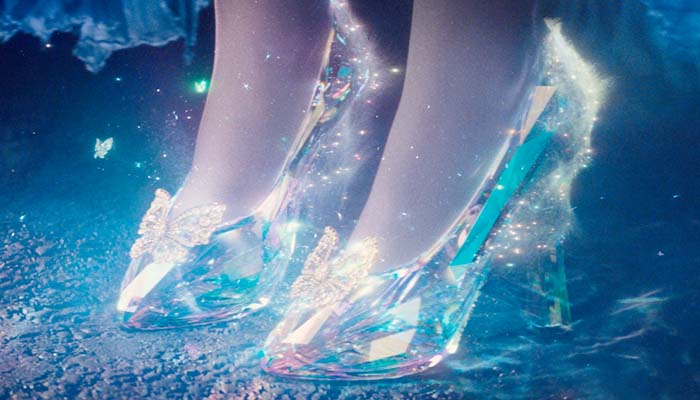
Cinderella does find the strength to defy Tremaine this time, taking the glass slipper her stepmother stole from her, leaving the attic, and presenting herself to Prince Kit as “an honest country girl who loves you.” Yet her one act of defiance is extremely subtle; she basically says “No,” takes the slipper, and leaves. Before then, she also made no effort to get out of the attic as in the animated film; she simply sat around singing and waiting. Viewers could argue this shows Cinderella is a product of her time period, but that argument doesn’t hold up in a remake where Cinderella is allowed to leave her house, have friends, engage in intelligent conversations, and show self-determination overall.
Rather, the remake shows Cinderella is being rewarded for enduring gaslighting. She allowed Lady Tremaine full control for a time, and now fate, the universe, or her own psyche have finally allowed her one moment of triumph–so long as that moment isn’t too loud or assertive. In a way, Cinderella is also rewarded for gaslighting herself. It’s not that she isn’t “an honest country girl,” but in presenting herself to Prince Kit that way, she’s still communicating, “I’m less than you.” By now of course, she recognizes she’s not as ragged and worthless as her stepfamily claims. Cinderella even tells the audience it can take a long journey for us to find who we truly are. But taken as a whole, Cinderella’s story communicates her courage and kindness are covered with passivity. She gets a happy ending only after accepting gaslighting behavior as normal, especially in terms of how a mother treats a daughter who she only wants to become “worthy.”
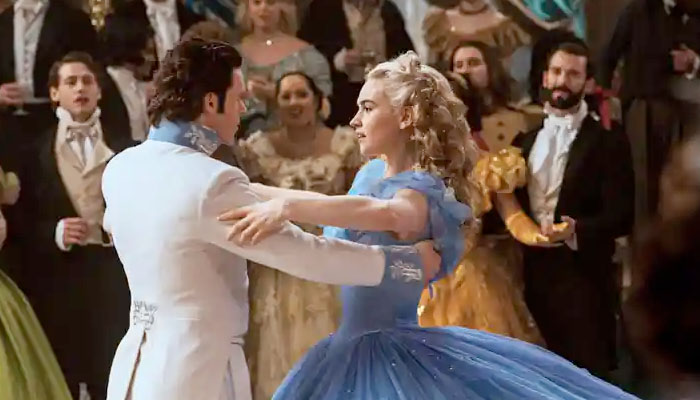
Lessons from Cinderella’s Gaslighting
As the first Disney heroine to experience long-term gaslighting, Cinderella opened new doors for deeper, stronger characters. She may have given in, or even embraced abuse as a twisted form of love. But viewers can still take positive lessons from Cinderella’s experience with gaslighting. For example, although Cinderella’s response was passive, she was able to show genuine kindness toward her stepfamily, as well as others who might not understand her viewpoint, such as Prince Kit. No one should passively accept abuse if they can help it, or use kindness as an excuse to continue in an abusive situation. But if kindness is a safe option, exercising it may help the abused person keep a grip on sanity–the very thing gaslighters want their victims to lose. Cinderella’s unfailing grace and poise, as well as her ability to see beyond what’s always been done, at least in the remake, indicates kindness helped her stay grounded in reality.
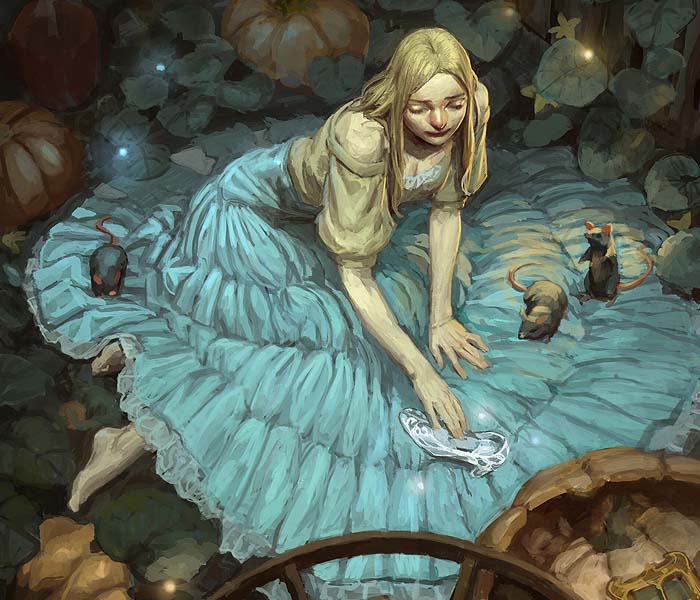
Speaking of reality, the reality outside Tremaine’s gaslighting is that Cinderella is a gracious, noble person. Maintaining that identity takes courage, especially when pitted against a professional gaslighter. As we have seen, Cinderella is not courageous in the classic sense. The animated version of her story makes her look a little like a sugar-coated coward who abuses innocents without knowing it. In trying to make Cinderella stronger, the remake arguably makes her look more helpless. But those problems aside, Cinderella does experience understated courage in her story. Attending the ball, where she might look foolish or be exposed, is an incredible act of courage. So too is her proposal to Prince Kit in the remake, even if that proposal revealed some insecurities. So while it is unfortunate that Cinderella has to be completely out of Tremaine’s purview before she shows courage, a nascent version of it exists. This can give hope to any viewer who doubts their own courage. It can also give insight to those outside abusive situations who believe the victims could be doing more to change their situations.
Ariel: Gaslit from Evil and Love
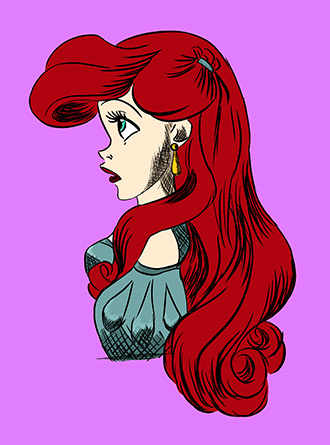
Our next princess who experiences gaslighting is vastly different from Cinderella, and a bit of a surprise. She’s Ariel of The Little Mermaid, the headstrong, ginger-haired, independent princess who joined the Disney canon in 1989. By then, gaslighting wasn’t as foreign a concept as in the 1950s, but most average film viewers probably didn’t know it well. Most viewers would also probably argue that Ariel isn’t a gaslighting victim. If anything, her impetuousness and lust for Prince Eric ensures that other people–or sea creatures–become victims. A close analysis of Ariel though, shows she is gaslit according to our definition. Additionally, a close analysis shows Ariel experiences a more dangerous version of gaslighting than Cinderella. As such, she has more complex lessons to teach viewers about the experience.
Frightened Dad, Heartbroken Daughter
What’s most interesting about Ariel is, her first gaslighter doesn’t mean to hurt her. Ariel’s father, King Triton, is the single father to seven daughters, and he lost his wife to humans. (Sequel movie Ariel’s Beginning specifies Triton’s wife Athena fell victim to pirates). Thus, Triton is rightfully terrified of seeing a daughter “snared by some fish-eater’s hook,” and nurses deep prejudices toward all humans. The problem is, the daughter most fascinated with the human world is Ariel. She’s Triton’s most reckless child, his most independent, and his youngest. In other words, losing Ariel would mean Triton would lose his last link to innocence, and fail to protect his most vulnerable family and kingdom member. Ariel’s Beginning probes this possibility further. That is, the sequel shows Ariel’s great resemblance to Athena, including their shared love of music. The implication is that if Triton lost Ariel, he would lose his last and most overt link to Athena.
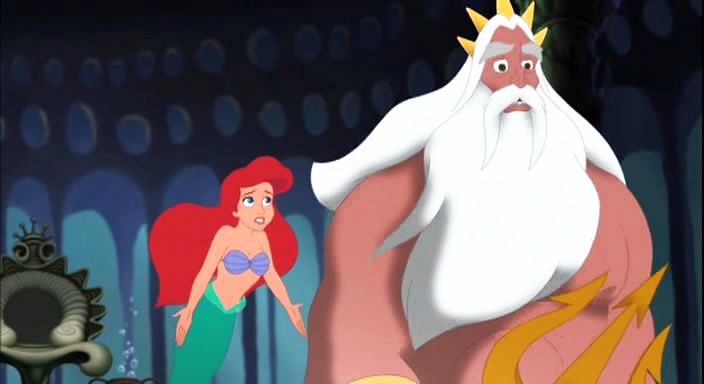
Triton’s protective instincts are justified, and his prejudices are understandable if not entirely excusable. But he takes his feelings too far, squelching Ariel’s interest in the human world and her bent toward exploration as a whole. When Ariel tells Triton she’s in love with Eric, he exclaims, “Have you lost your senses completely?” Again, this is understandable, especially considering Ariel is 16–a child, no matter what she says to the contrary–and has never even talked to Eric at this point. But out of anger and fear, Triton gaslights his daughter in a way today’s women often hear. He basically tells her, “You’re not in love.” This assumes Ariel has no concept of what love is and can’t have complex or intelligent thoughts and feelings about it. Triton’s question–another form of, “Are you crazy”–also assumes none of Ariel’s emotions are legitimate.
Again, the root of Triton’s concern is valid. Ariel is not actually in love with Eric because by definition, she can’t love someone she doesn’t know. But Triton has committed gaslighting because instead of responding to Ariel’s thoughts and feelings, he dismisses them as evidence that she’s “lost her senses.” Whether he means to or not, Triton makes Ariel feel as though she is in the wrong to entertain thoughts or feelings that might go against his own. And when Triton goes on a rampage, destroying all of Ariel’s human treasures, he crosses straight into emotional abuse and pushes Ariel into the tentacles of her next gaslighter.
One of Ursula’s Unfortunate Souls
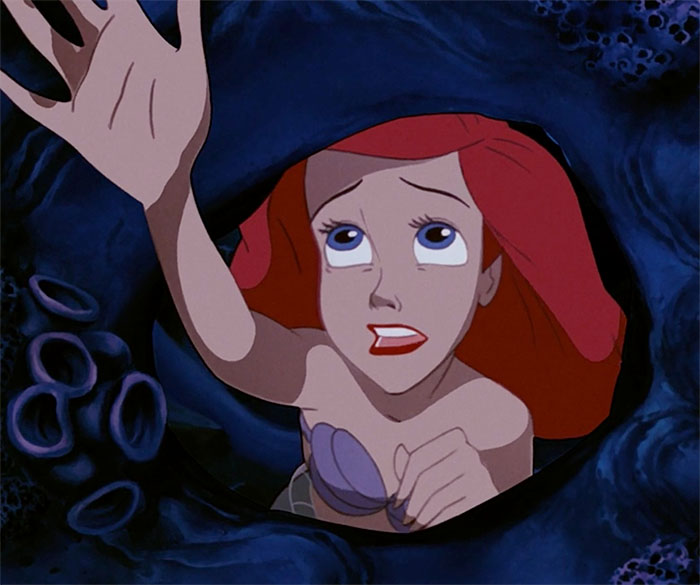
Her treasures destroyed, new emotions dismissed, and connection to Eric lost, Ariel becomes a prime target for sea witch Ursula. When Ursula’s eel minions Flotsam and Jetsam approach her, Ariel initially resists. “The sea witch?” she asks incredulously when the eels insinuate Ursula can help her. “No! Get out of here, leave me alone!” But Ariel’s pain is too fresh for her resistance to last. She swims off with Flotsam and Jetsam, friends Flounder and Sebastian in hot pursuit. After all, if her only parent has already hurt her, has already taken everything she held dear, how bad could Ursula be?
Ursula preys on this line of thinking when she and Ariel first meet. She calls Ariel “my dear, sweet child,” and implies the little mermaid is a helpless victim. Ursula also implies she is the only one who can understand Ariel’s desire to love and unite with Eric–“Not that I blame you. He is quite a catch, isn’t he?” She drives the nail in further by comparing Ariel to her other clients–“Poor souls with no one else to turn to.” This reinforces Ariel’s position as victim, and sets our heroine up to gaslight herself. That is, Ariel swallows Ursula’s implicit lie, “I am the only one who understands you. Thus, I am the only one you can trust, and you should do what I say.” Once primed, Ariel willingly gives up her voice to Ursula. Physically, she gives up her means of communication and her greatest talent. Symbolically, she gives up any means of telling Eric, or anyone else, what really happened. Ariel gives up access to her father and sisters, who while misguided, could potentially help her navigate her situation in healthier ways. And she forfeits agency over what happens for the rest of her story. If Ariel fails to get “the kiss of true love,” Ursula will own her, body, mind, and soul. In fact, Ariel will become a grotesque garden polyp, a mere “shell” of herself.
Separating Love from Gaslighting
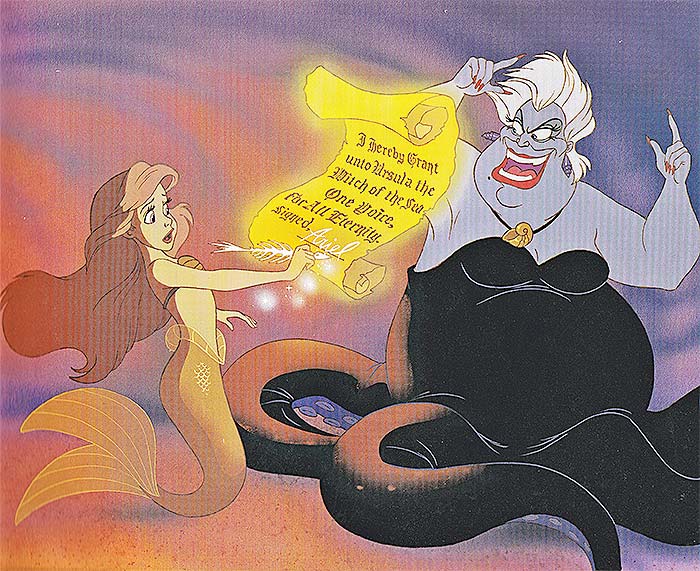
To her credit, Ariel sticks with Ursula’s deal once she signs the sea witch’s contract. She puts all her effort into getting to know Eric, with or without a voice, and communicate that she is the girl for him. Ariel succeeds to a point. She and Eric get to know each other during a tour of his kingdom, and Eric slowly learns the mute girl he found washed up onshore is inquisitive, vibrant, and beautiful in more ways than one. On a romantic boat ride, the two almost kiss, almost defeating Ursula with plenty of time before Ariel’s three-day deadline. But just as Ursula is a professional gaslighter and manipulator, she’s a pro at playing dirty. She sends Flotsam and Jetsam to capsize Ariel and Eric’s boat before the kiss can happen, and then uses Ariel’s stolen voice to convince Eric she is “Vanessa,” the mysterious girl who rescued him from a shipwreck.
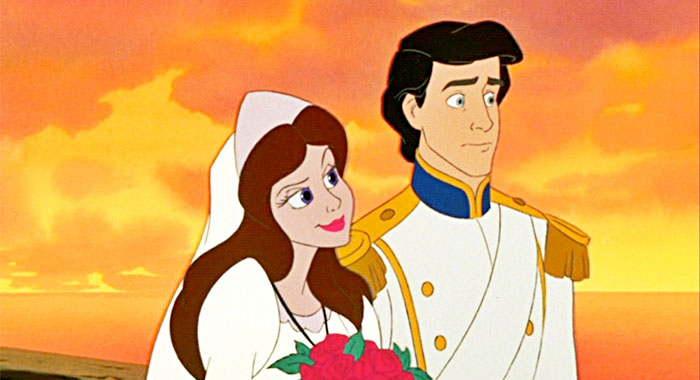
Seeing Eric with Vanessa almost crushes Ariel’s spirit, but with her sea friends’ help, she takes one more stab at winning his love and defeating Ursula. Again, the plan almost works, as Ariel’s friends sabotage Eric’s shipboard wedding and shatter the golden seashell in which Ursula has imprisoned Ariel’s voice. “You’re the one,” Eric exults when he hears Ariel sing. “It was you all the time.” He takes her in his arms, and Ariel leans in. “Oh, Eric, I wanted to tell you,” she agrees, and the two almost lock lips–just as Ariel’s time runs out. She reverts to mermaid form, and Ursula drags her back into the sea.
Once again, it seems Ariel has lost it all–not only her “new love” Eric, but also her chance at living as a loved, valued individual. Ursula’s contract is ironclad, and although Ariel sobs, “Daddy, I didn’t mean to…I didn’t know,” her signature indicates she did know what Ursula was up to. Even if she hadn’t signed the contract, Ariel heard and understood what Ursula meant when she said failing meant, “You belong to me.” Worse, she went to Ursula of her own free will, and convinced herself Ursula was a source of succor. Like many gaslighting victims, Ariel has so absorbed Ursula’s lies that, her regret notwithstanding, she can’t untangle herself from the situation. And just as most gaslighting victims blame themselves for their abuser’s actions, Ariel has more reason than most to do so. She is no longer in a position to separate her own mistakes from the machinations of a more powerful person who took complete advantage of her vulnerability.
Fortunately for Ariel, love conquers manipulation and gaslighting, if not the way she anticipates. In a plot twist, Triton demands Ursula take her tentacles off his daughter, strikes her name from the contract, and becomes a polyp in her place. Triton doesn’t formally apologize for his earlier behavior, but this sacrificial act says more than his words ever could. He loves his daughter unconditionally and will do anything to protect her, including paying the price for her misdeeds. In so doing, Triton exchanges his earlier, fear-based form of protection and love for a well-informed, courageous one that puts Ariel first instead of his prejudices.
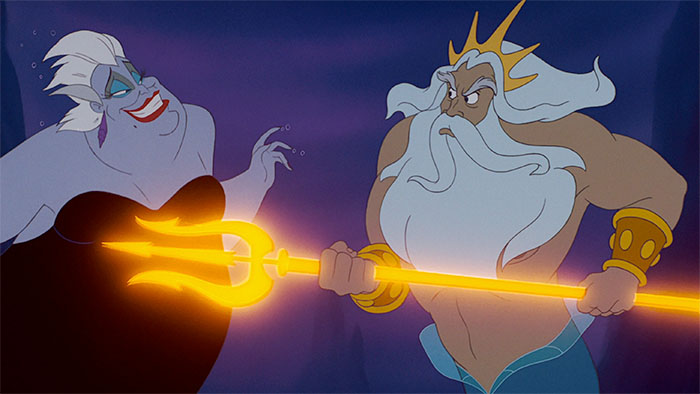
Ariel herself doesn’t defeat Ursula, although she does help Eric steer a ship into her side and deliver a fatal blow. Nor does Ariel actually apologize to Triton or even admit she did anything wrong. Instead, after Ursula’s death, Ariel just sits moping at the surface until Triton turns her human and grants her wish. This ending gives plenty of viewers reason to say, Ariel didn’t learn anything from her experience or overcome gaslighting and manipulation. If anything, she learned that whining and rebelling–other forms of manipulation–gets you your way. It could even be argued Ariel gaslit Triton into believing he was a completely bad and unworthy parent.
Before we throw Ariel’s trajectory into the sea however, we should take a closer look. The Little Mermaid‘s final scenes are actually packed with subtle nods to redemption, maturity, and reconciliation. For instance, when Triton turns Ariel human, she doesn’t run straight to Eric. Instead, she exchanges a thrilled, grateful look with her dad before letting Eric sweep her into his arms. Her evident surprise and joyous smile communicate, she wasn’t expecting anything from Triton after Ursula’s defeat. Ariel knows what she did, up to and including almost costing her dad his life and kingdom. So Triton’s choice to “redeem” her, and Ariel’s silent response, speaks volumes. Had she tried to apologize or argue with Triton’s decision, it’s likely viewers would’ve seen an unchanged Ariel, one who talks and wheedles to get her way and then plunges ahead. The silent moment viewers get instead shows how Ariel is beginning to grow.
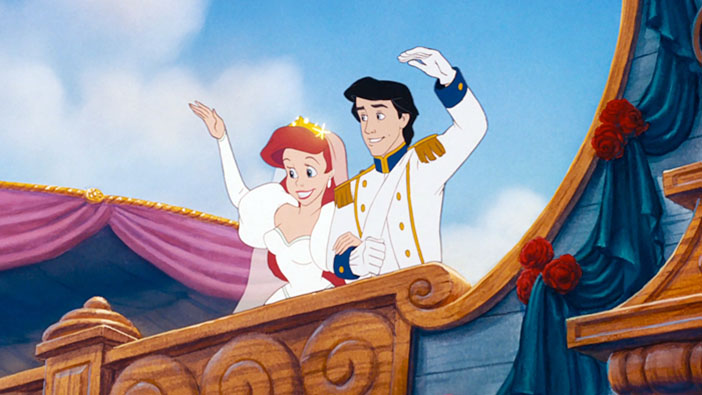
Ariel’s growth continues during her wedding scene. Viewers do see her and Eric together at last, with a ship full of humans and a sea full of supportive mer-people sharing in their happiness. But the most touching moment of this scene has nothing to do with Eric and Ariel. Instead, this happens with Triton, who comes up from the sea for a last embrace with his daughter. She hugs him tight and whispers, “I love you, Daddy,” in his ear. It’s her last line. Meanwhile, Eric’s last action is a silent, smiling bow toward Triton, an ultimate sign of respect. Again, the moment signifies both characters have grown, especially Ariel. Eric acknowledges that a merman, a non-human, is worthy of his regard, and perhaps his love as the man who first loved his wife. For her part, Ariel finally acknowledges that her father, the person she rebelled against, had her real best interests at heart. He wasn’t perfect, but he showed her true parental love. Triton didn’t simply give Ariel what she wanted; instead, he tried to help her grow into those desires. Better, he showed her how to repent of mistakes and move forward.
Lessons from Ariel’s Gaslighting
Most gaslighting victims won’t find themselves in Ariel’s position. Gaslighting, by its nature, presupposes an innocent victim. And certainly, gaslighters aren’t usually literal witches with magic at their disposal. Still, Ariel is a better-developed gaslit character than Cinderella, precisely because her bad traits are more easily recognized. Mermaid or not, Ariel is a human representation of a gaslit person, and so she can teach multifaceted lessons about how to deal with this phenomenon.
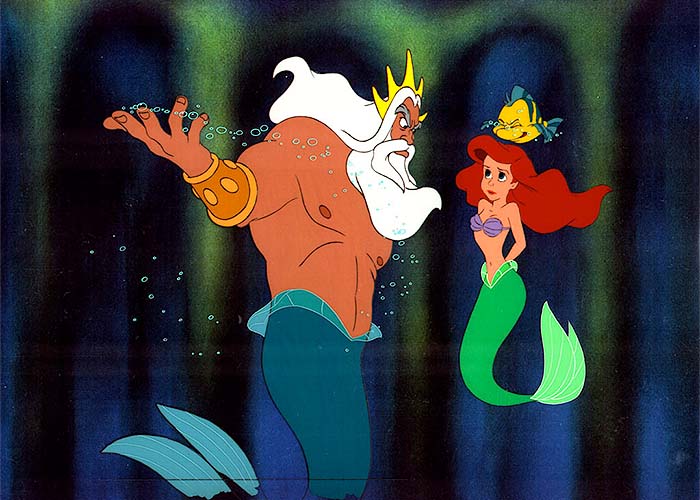
First and most importantly, Ariel gives viewers a peek into what makes people vulnerable to gaslighting in the first place. Abuse or even misguided love can play a big role, as we saw with Triton, and that needs to be handled. Sometimes though, people become vulnerable to gaslighting because their minds and hearts are already badly bruised. For whatever reason, the gaslighting victim already feels invalidated and helpless, so it’s easy for a “powerful” person to come along and twist those emotions. They can do that in pure villain style, affirming that yes, the victim is worthless. Or the more powerful person might act like Ursula, setting themselves up as a rescuer, the one person their victim needs. In either case, the victim must be on guard. She must listen to what she’s really hearing under manipulative words, and act accordingly. Anything that sounds like, “I understand you when no one else does,” “Only I will help you,” or “Only I will accept you once you fail,” is a signal to get out of the situation.
Secondly, Ariel is a cautionary tale in handling the vulnerabilities that lead to gaslighting. In Ariel’s case, she called a crush on Eric “love” because she had no other frame of reference for her feelings. Nor did she have supportive, available, more mature people in her life who could keep her in check without tearing her down. Thus, Ariel fell back on anger, rebellion, and unwise levels of independence that left her without a support system when she needed it. The few supports she had, such as Sebastian and Flounder, she pushed away.
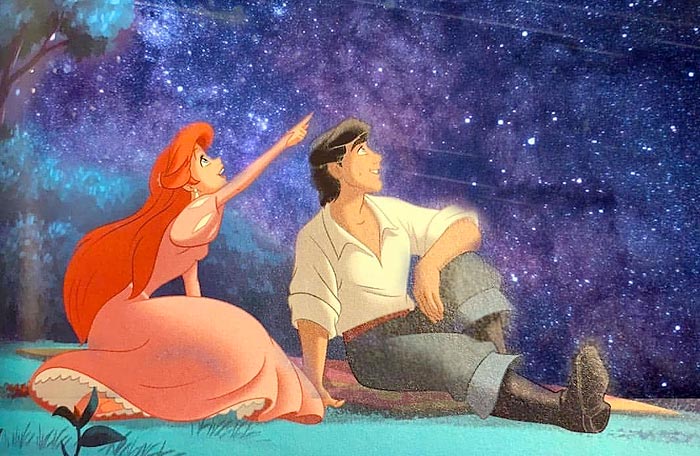
It can be difficult for a gaslighting victim to discern who is truly supportive and who is worthy of trust. But Ariel and Triton’s relationship gives us signs to look for. A supportive person, one who can help break the gaslighting cycle, is wise. They may hurt you–they may even gaslight you themselves by accident. But a supportive person will own up to their mistakes and show remorse. They will give you the chance to do the same if needed. A supportive person will also give you what you need, not necessarily what you want. They will be firm if necessary, but will also be gentle and affirming. And like Triton with Ariel, a supportive person will show unconditional love and put others first, sometimes to the point of self-sacrifice. People who surround themselves with this kind of inner circle may not escape gaslighting completely, but they will be far less likely to fall prey, and far more likely to recognize gaslighting when it happens.
Rapunzel: Meeting Gaslighting Head-On
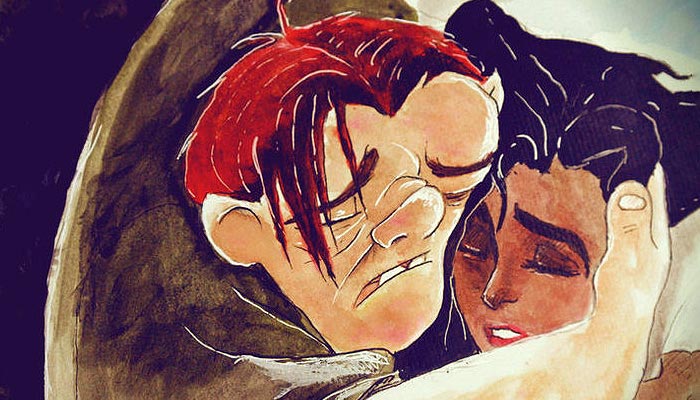
Despite Cinderella and Ariel’s stories, it would be many years before Disney would tackle gaslighting again. The concept would pop up again, such as between Quasimodo and his abusive guardian Judge Claude Frollo in The Hunchback of Notre Dame, or as noted, in such classics as The Lion King. But gaslighting would take a backseat to heroism and masculine triumph in these and other films. It wasn’t until 2010 that Disney viewers would meet another heroine experiencing gaslighting. But when they did, they would see her meet it and tackle it head-on in a way no previous hero or heroine had before.
One of the first movies of The New Tens, Tangled is Disney’s take on the fairy tale “Rapunzel.” In their version, the eponymous heroine Rapunzel is a princess born with magical blonde hair. Her hair, imbued with the power of a magical flower, can ensure eternal youth and wellness. Rapunzel was born with this power after her mother, Queen Arianna, ingested the flower as part of a potion that cured her severe illness. Unfortunately, curing Queen Arianna meant stealing the magical flower from Gothel, the witch who had guarded it for years, keeping its powers for herself. Therefore, Gothel kidnapped baby Rapunzel from the palace and raised her as her own for eighteen years.
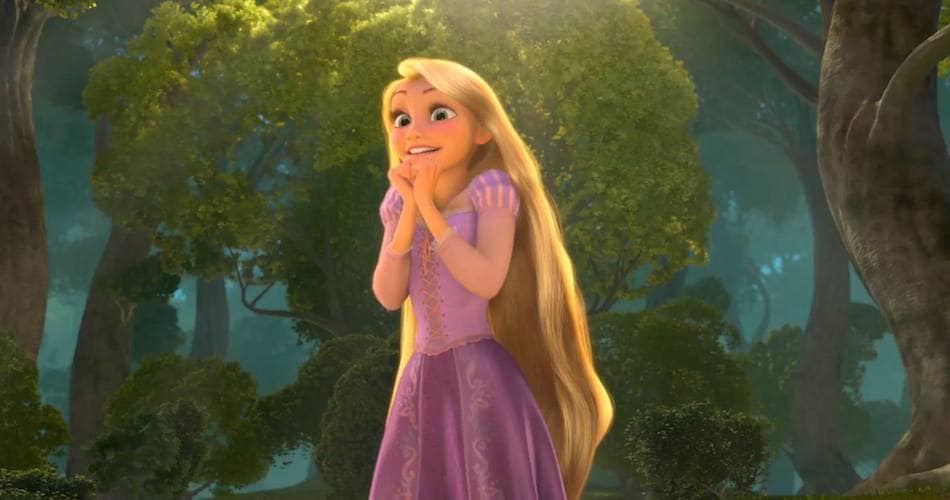
Like her fairy tale inspiration, Disney’s Rapunzel grows up in a tower deep in the forest. By the time she’s a young adult, she’s found a plethora of ways to cope with her solitary existence. Her opening song, “When Will My Life Begin,” tells us Rapunzel enjoys every hobby from reading and painting to ballet, chess, baking, and pottery. However, Rapunzel remains completely isolated from the outside world, with Gothel as her only contact. Rapunzel calls Gothel “Mother” and relates to her as a parent. Gothel is the only person she’s ever been taught to trust or love, which sets Rapunzel up as a perfect gaslighting target.
Insidious and Multifaceted Gaslighting
Mother Gothel is the slyest and most multifaceted gaslighter in our discussion so far. Unlike Tremaine and Ursula, gaslighting is this villain’s main modus operandi. Licensed therapist Jonathan Decker and filmmaker Alan Seawright of the YouTube channel Cinema Therapy cite no less than eleven ways Gothel gaslights Rapunzel. Among other examples, Decker and Seawright call Gothel out on “using what is near and dear” to Rapunzel to get to her, and “[wearing her] down over time.” They, and other experts such as the staff at Psychology Today, bring up several other examples such as blatant lies and distortion of reality.
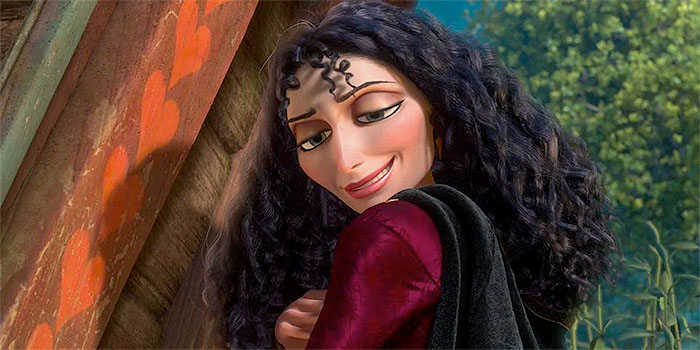
The fact that Gothel can so easily use all these methods and more makes her a bigger threat than Ursula or Tremaine. What’s even scarier is how seamlessly she can switch her methods. When we first meet her, she asks Rapunzel to look in the mirror and says, “I see a strong, confident, beautiful young lady. Oh look, you’re here, too!” This form of gaslighting is more insidious than the forms Ursula or Tremaine used; it’s a compliment wrapped in an invitation for Rapunzel to doubt her worth. This method might make viewers think Gothel will spend the entire film as what TV Tropes calls an Affably Evil villain, someone who is in fact evil but often acts like a perfectly nice person. But Rapunzel, and viewers, are thrown for a loop when a few lines later, Gothel drops that affable mask. Rapunzel asks to “see the floating lights” for her birthday, and Gothel instantly goes icy and threatening. She tilts Rapunzel’s face to hers–a subtle way of getting up in it–and almost growls, “Rapunzel, don’t ever ask to leave this tower again.” Such inconsistency keeps Rapunzel emotionally off-center. When she’s off-center, she’s more likely to obey Gothel and accept the villain’s view of her as accurate. Even viewers, who know Gothel is the villain, might be caught off guard, too. They, especially children, might not know what kind of villain Gothel is, or even if she intends to act evil. Like Rapunzel, they’ll be in the perfect position for Gothel’s twisted words and actions to hit them harder than if she were a “traditional,” power-hungry, obviously angry adversary.
Additionally, Gothel is a chillingly gifted gaslighter because her methods have many facets. This is most obvious in her villain song “Mother Knows Best.” The eerily catchy number is full of the threats and belittling she’s used on Rapunzel before, but in song, Gothel takes the focus off herself. Instead, she convinces Rapunzel to stay in the tower because the world outside isn’t safe. She lists every potential danger in the book, from “ruffians…poison ivy, [and] quicksand” to “the plague…[and] men with pointy teeth.” When Rapunzel tries to protest that such possibilities shouldn’t keep her from going outside, Gothel cries, “Stop, no more, you’ll just upset me!” This is another facet; it puts attention back on Gothel as a victim, and it puts words in Rapunzel’s mouth. In other words, Gothel has to pretend Rapunzel actually is upset and scared, so she can continue manipulating her.
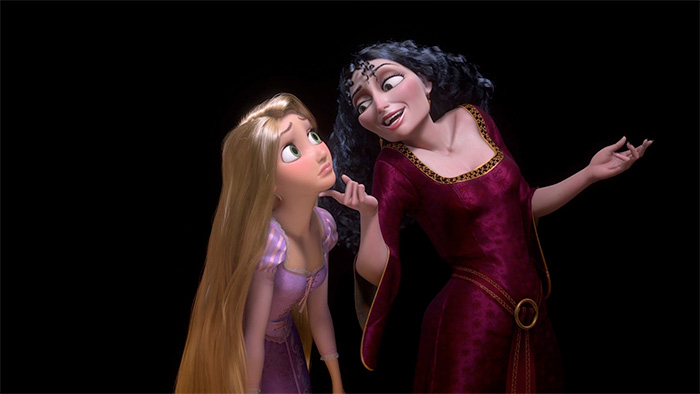
Throughout “Mother Knows Best,” Gothel also uses blatant lies to convince Rapunzel her point of view is wrong. Ordinarily, blatant lies are the first and most easily defeated trick in a gaslighter’s arsenal. But Gothel speaks kindly when telling her lies, and lists them so fast Rapunzel can’t respond. Some of her lies have just enough truth to be unsettling–“sloppy [and] underdressed” refers to the fact that Rapunzel is barefoot, and that because of her isolated life, her dress and hair are probably a bit more mussed than they’d be otherwise. “Gullible, naive, positively grubby,” could work for the same reason, although the lie is more complicated because Gothel isolated Rapunzel, which probably made her naive. And some of Gothel’s lies are laughable, such as when she says Rapunzel is “gettin’ kinda chubby.” When taken with the other lies though, this one becomes just another way Rapunzel might doubt herself and her capabilities.
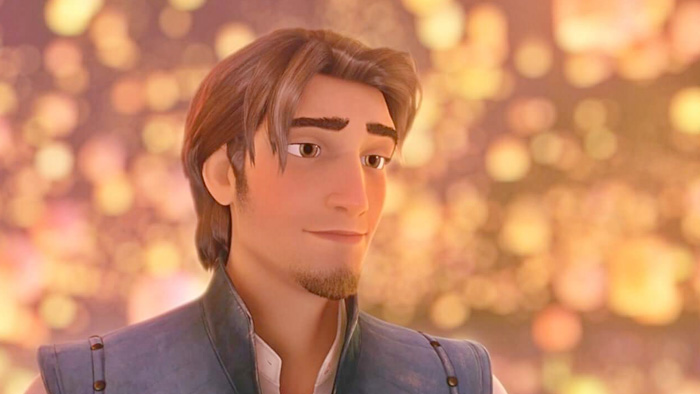
It’s no wonder then, that when Flynn Rider comes along, Rapunzel has no idea how to interpret his actions. At first, she treats him like the intruder he is, braining him with a frying pan and locking him in her wardrobe. It’s a smart move in her situation (disproving yet another of Gothel’s lies that her pseudo-daughter is “ditzy”). But when Flynn offers Rapunzel a chance to leave the tower, she takes it, with less regard for her own safety or who Flynn really is. This reads not only as desperation, but an abuse victim’s bid for freedom. Like many real abuse victims, Rapunzel acts against the fear she’s absorbed, because deep inside, she knows her lens of fear doesn’t represent the real world. However, she doesn’t have the time, experience, or emotional stability to think through all the angles as a more secure person would. This is why she initially swings between exulting in her freedom and worrying over Gothel’s reaction. It’s also why Rapunzel calls herself a horrible daughter and horrible person. Gothel has never outright called her these things. But the fact that she is so inconsistent in her love keeps Rapunzel on tenterhooks, even and especially when she wants to embrace said love.
Mother Gothel the Love-Bomber
The last and most evil way Gothel employs gaslighting is called “love-bombing.” Healthyplace’s writer Emma Marie Smith claims love-bombing is “the gaslighter’s most effective weapon of abuse.” But how do you “bomb,” or destroy, someone with love, which should be the opposite of abuse?
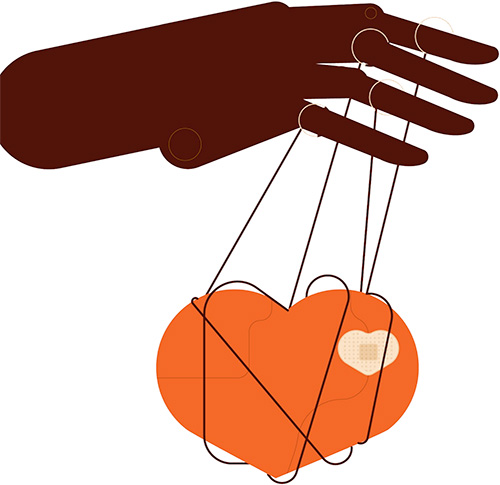
There are different types and levels of love-bombing. Emma Marie Smith points out that at its most extreme, love-bombing has been used in cults to “groom” members into staying with or obeying leaders. However, a more common form of love-bombing boils down to “fake intimacy” (Smith). A gaslighter offers his or her victim “compliments, affection, and intimacy” in order to set the victim up for codependency (Smith). As we’ve seen with Gothel, this also involves discovering the victim’s weaknesses, real or perceived, and playing on them.
As we’ve also seen with Gothel, love-bombing is cyclic in nature. That is, when and if a victim makes steps toward getting out, the love-bomber will come on strong with more intimate, romantic, or compassionate gestures. The bomber may apologize or promise not to gaslight again. They may placate, offering tangibles like favorite foods (ex.: when Gothel goes out of her way to make Rapunzel’s favorite hazelnut soup). Or they may minimize or deny what they did, while still offering love. This is the parent who hugs or kisses a gaslit, scared child while saying, “I’m sorry you felt that way.” This is the partner who offers a gift, a date, or sensual affection while placating, “Next time, don’t blow things out of proportion, okay?” And in Gothel’s case, this is the captor, acting as the parental or mentor figure, who communicates, “I love you when no one else does or can. Here, have some evidence.”
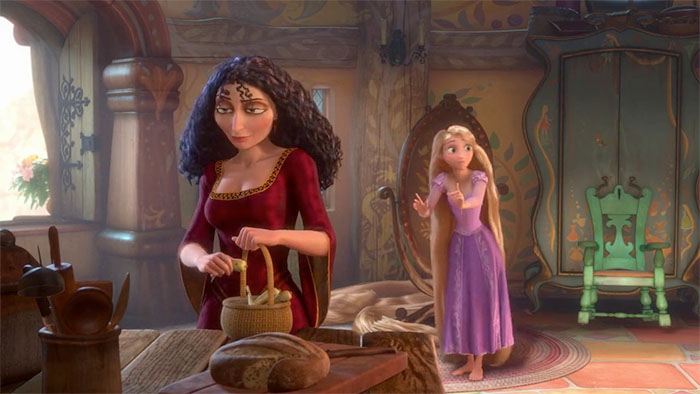
Love-bombing then, is a highly dangerous form of gaslighting because it is so sneaky. Yet the love gestures themselves are not nearly as dangerous as “when the mask slips” (Smith). Because love-bombing isn’t real love, bombers can’t keep up the charade forever, as Rapunzel learns the hard way. She sees Gothel’s mask slip periodically throughout Tangled, mostly in how she speaks. For instance, Gothel will claim she’s joking when she belittles Rapunzel. Or, she’ll act the victim and say, “Great. Now I’m the bad guy.” Thus, Rapunzel stays off-center, and the only thing she can do to get the relationship back to a “safe” place is, apologize to Gothel or reassure her. Note the “mother-daughter” ritual of, “I love you. I love you more. I love you most.” It seems like a sweet, innocent exchange, and for Rapunzel, it is at first. She sincerely loves Gothel–or thinks so–because Gothel is the only mother figure she has. But for Gothel, the exchange is based on a demand for love, and the “winning” of a verbal competition. In other words, “I love you most, so you are the subordinate. You can never love me the way I love you. You are in fact incapable of love on my level.”
Shattered Mask, Ransomed Victim
By the time we reach Tangled’s climax, it seems Gothel has all the power and will likely retain it. After all, as much as Rapunzel loves the outside world and is coming to love Flynn, how can those things stand up to eighteen years of love-bombing, gaslighting, and lies? It’s not easy, but Rapunzel proves they–and she–can.
When Rapunzel accidentally leads Flynn into Gothel’s clutches, he’s captured and stands to be killed. Worse, Rapunzel is set up to think the entire situation is her fault, because she left her tower in the first place. She even pleads with Gothel–“I’ll go back…and stay with you forever…just don’t hurt him.” She promises Gothel everything will be “just like it was”–Gothel can love Rapunzel most. She can have all the power. Rapunzel will always be the one to give in, and she will always accept Gothel’s version of the truth. Had Gothel been a more secure villain, Rapunzel’s words might have worked.
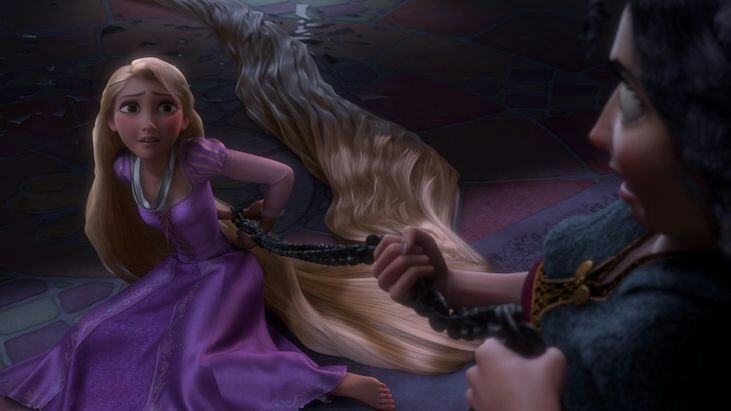
This time though, Gothel lets her mask slip too far and stay down for too long. By now, she’s so angry with Rapunzel for leaving, thus taking her access to the youth she covets, that she can’t hide it quickly enough anymore. For example, she’s desperate enough to keep Rapunzel in physical chains, symbolically revealing her real motive has always been malevolence. More importantly, in her rage, Gothel lets slip information that leads Rapunzel to the truth. She is the lost princess of Corona. In other words, “Mother” was never her mother. She’s just Gothel, an evil witch masquerading as a parent. Gothel never wanted Rapunzel for herself, her personhood. She never saw her as a daughter. No, Rapunzel finally realizes, Gothel wanted her for something physical–something Rapunzel has complete control over.
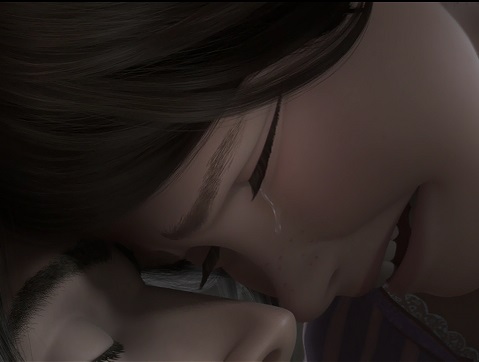
Flynn slices Rapunzel’s hair, cutting off the magic and turning her blonde locks into a brown bob, which can be read as the “true” version of what Rapunzel’s hair would’ve been. (Note that Queen Arianna, while long-haired, is a brunette). Once the hair’s power is “disconnected,” Gothel metamorphoses into the hag she’s always been, another physical symbol of her true nature. Her appearance enrages and disgusts her so, Gothel actually crumples to her death. But even had Gothel lived, viewers know Rapunzel would’ve remained free of her. Rapunzel’s experiences in the outside world prepared her for some vital truths, such as, Gothel is not the only person in the world, nor is her version of love the correct or only one. Rapunzel also learned the difference between freedom and captivity, in a physical and emotional sense. When she’s finally ready to take back physical control through her hair, Rapunzel discovers full control of her selfhood. She breaks free of gaslighting more thoroughly and definitely than any Disney woman we’ve seen so far.
Lessons from Rapunzel’s Gaslighting
Just as there are 11 distinct ways Gothel gaslights Rapunzel in Tangled, there are probably as many distinct lessons we can take from this Disney heroine alone. However, a few stand out more than others. Specifically, since Rapunzel is a better-developed heroine than Cinderella or Ariel, she has the most to teach about how to avoid gaslighting in the first place, and the immediate steps one can take if she finds herself a victim.
Rapunzel is a timely, if chilling reminder that to avoid gaslighting, potential victims need to know real emotions from false ones. That is, if a potential victim is confronted with a love-bomber, she can fight back using the definition of real love. A potential victim can ask herself, “Is this person building me up or tearing me down? If they say they’re joking about some perceived flaw, am I laughing, too?” If the potential victim is laughing, it might be banter. If not, it’s hurtful and possibly abuse. She might also ask herself, “When and how do I get what I need or want from this person?” That is, if the potential gaslighter only offers affection, favorite things, or praise on their terms, that’s a sign of love-bombing in particular.
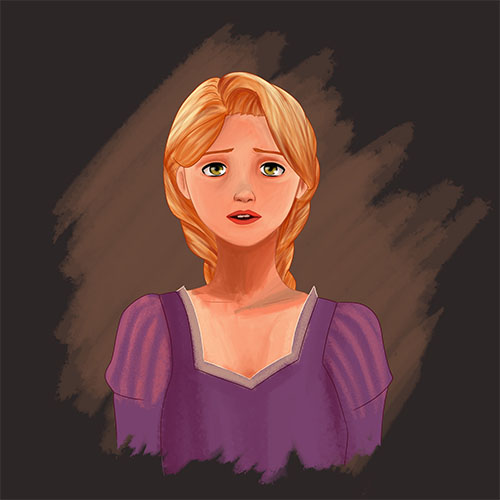
Additionally, Rapunzel reminds us that to stand against gaslighting, we must know the truth about ourselves. Sometimes, this involves responding to blatant lies. For instance, Rapunzel might’ve easily told Gothel, “There is no way I’m chubby, unless we’re looking in different mirrors.” She might’ve said, “I read and study everything I can get my hands on; there is no way I’m ditzy or vague.” Even if she didn’t verbalize these truths, Rapunzel could’ve used them to shore herself up mentally. Evidence suggests she did, considering how strongly she was able to stand up to Gothel in the end.
But what if the gaslighter’s lies and jibes are not so blatant? Perhaps the potential victim is overweight, and the gaslighter continually points that out. Maybe the gaslighter likes to point out the things their victim can’t or didn’t do–“You can’t be as smart as me. You never went to college.” “How can you possibly survive without me? You’re physically handicapped.”
In these situations, the potential victim needs help separating the little bit of truth from the insidious lie hiding inside. As in, yes, a physically disabled person does need help–but so does everyone else. Research has continually shown independence is possible. Yes, a person may be overweight, but that is neither a permanent state nor a reflection on character. A potential victim may also note, the lies of a gaslighter are often about control. If a victim is being belittled about her lack of a college degree, it’s because the gaslighter wants to be seen as the smarter, more capable person in the relationship. The victim can take back control by telling herself the myriad ways she too is intelligent. She can choose to go back to school, or use a weight loss plan, or attend courses on independent living. Or, as is more effective with gaslighters, she can expose the lies for the fragile and easily refuted things they are.
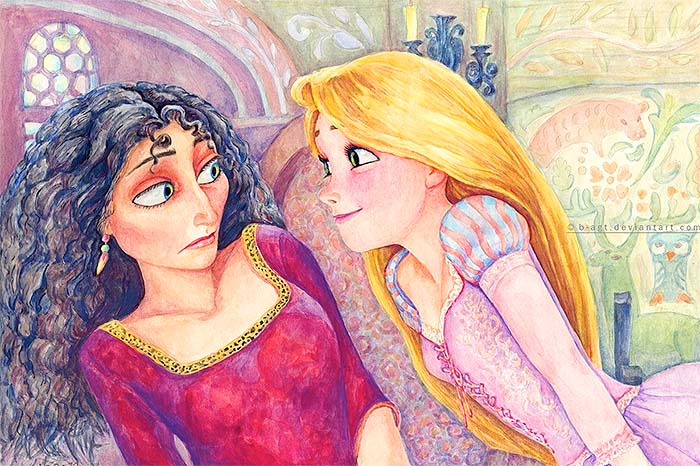
Finally, Rapunzel reminds us that in order to avoid and beat gaslighting, we all need strong inner circles. Rapunzel was vulnerable to Gothel because the latter was able to tell her, “I’m the only one who knows and loves you.” Rapunzel had no evidence, physical or emotional, to the contrary. Similarly, some gaslighting victims may be held captive (i.e., in a trafficking situation) and thus need intense, professional help to get out safely. So too, professional help is needed when a gaslighter purposely isolates you from friends or family.
However, if neither of these things have happened or are happening, gaslighting can be beaten. Better, it can be stopped before it starts. Especially for women, this begins at a young age, with trusted family, friends, teachers, clergy, and others who can demonstrate concepts like love and truth. As she gets older, a woman like Rapunzel should build her own support system based on who has her true best interests at heart. She should keep these people as reachable as possible, and check in often. If a potential gaslighting victim finds herself entertaining thoughts like, “No one cares about me” or “X person is the only one,” it’s best to seek professional help right away.
Elsa and Anna: When the Gaslighter Lives Inside You
Another New Tens Disney film, Frozen graced our screens in 2013 and was an immediate smash hit. Everyone, especially young girls, loved Elsa, Anna, and their adventures. Elsa in particular soared to heights of popularity the other Disney princesses only dreamed about. Her queenly status, magical abilities, and unforgettable solo “Let it Go” kept audiences under her icy spell for years after Frozen premiered. Elsa became an icon for those who had ever felt the need to hide any part of themselves. She became a touchstone and place of comfort for people who had been forced to hide–who had perhaps been gaslit or bullied into it.
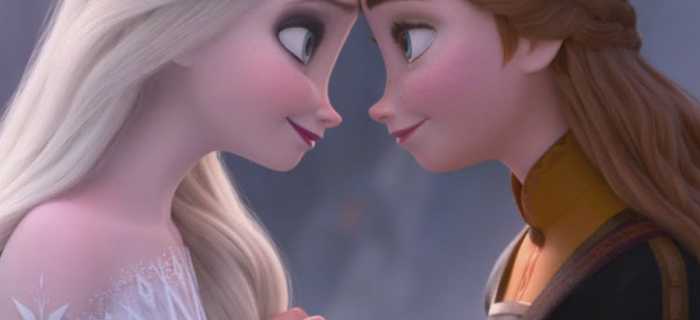
Yet, we can’t have a discussion about gaslighting in Frozen without including Elsa and Anna. Frozen‘s messages about gaslighting aren’t nearly as blatant as those in Tangled, but they do exist. Moreover, the protagonists of Frozen give us two distinct versions of gaslighting. They also give us distinct, multifaceted looks at what happens when the most dangerous gaslighter lives inside the victim.
Anna: A Toxic Mix of Love and Shame
From the outset of Frozen, Anna comes across as an extraverted, enthusiastic, and unfailingly kind person. Everything about life thrills her from the moment she wakes up every morning. “The sky’s awake, so I’m awake!” she explains in an opening scene when Elsa wonders why she’s up so early. Indeed, Anna can’t wait to experience a new day in Arendelle with her sister and best friend. “Do the magic!” she begs, while Elsa uses her ice powers to turn the castle ballroom into the ultimate winter wonderland. The few minutes of fun the sisters experience form the foundation for the deepest truth in Anna’s life. Elsa is her closest friend and the person she loves most in the world. Plus, Elsa’s love helps Anna feel secure in herself, even if she’s less serious and “princess-like” than Elsa.
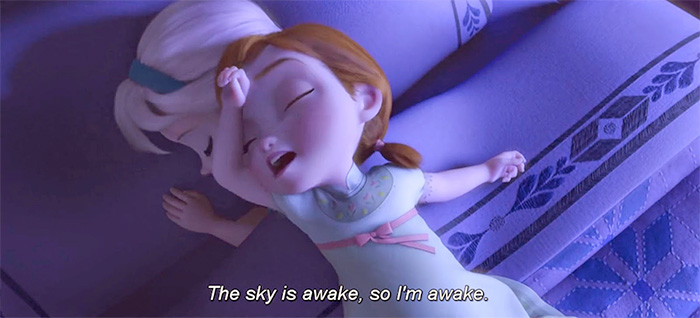
Inexplicably, Anna doesn’t have the powers Elsa does. That, plus her status as the princess who won’t inherit the throne, makes her less privileged in the eyes of Arendelle. Despite this though, Anna is content to become the princess, and person, she was meant to be. She’s not only a benefactor of Elsa’s love, protection, and magic. She’s an equal participant in it. Elsa’s unspoken message to Anna is, “You’re my sister, and that is what I want and need you to be. We can benefit Arendelle together.”
Anna and Elsa’s bond is shattered when the latter accidentally hits her younger sister with an ice shard. The shard freezes Anna’s head, leaving a permanent white streak in her hair. It also places her in imminent danger, though not mortal (as would have happened if the shard froze her heart). Arendelle’s loyal troll population heals Anna, but leader Grand Pabbie warns that if Elsa’s powers get out of control again, or Anna is allowed to know of them, disaster could befall the kingdom. “But don’t worry,” he says when wiping the memory of Anna’s injury from her mind. “I leave the fun.”
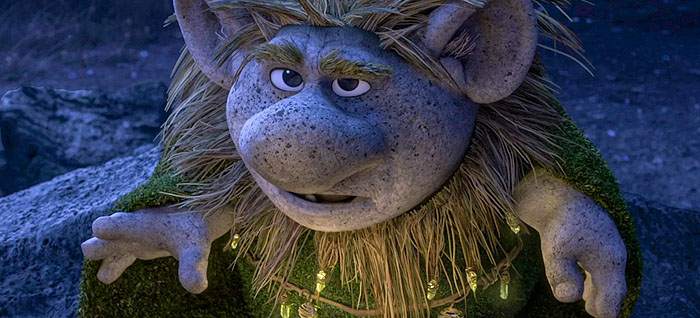
Grand Pabbie’s intentions are noble, but they backfire. Anna grows up with vivid memories of Elsa’s love, but confusion over why she is no longer allowed to play with or even be around her sister. “We used to be best buddies, and now we’re not. I wish you would tell me why,” young Anna sings in “Do You Want to Build a Snowman.” But the isolated, fearful Elsa can’t tell Anna why. Over the years then, Anna becomes convinced Elsa wants to shut her out on purpose. We don’t see her grappling with this, but we can infer she has myriad questions. Additionally, we can infer Anna fears Elsa’s “freeze out” is because of something she did. In fact, the more exuberantly Anna invites Elsa to play and experience life with her, the tighter Elsa coils into herself. It’s not a stretch to believe Anna internalized, her extroverted nature, love of life, and lack of “princess” behavior has somehow hurt her sister, or will do so. In effect, Anna gaslights herself–“You were too eager and needy, so now Elsa doesn’t want or need you.”
Desperate and Dependent, or Determined and Devoted?
Anna’s situation becomes more complex and sadder as the girls grow up. A few years after their parents’ death, Anna is 18 and Elsa, 21, about to be crowned Queen of Arendelle. Coronation Day means a huge party and the first time Arendelle’s gates have been open to its people “in forever.” Anna’s eagerness for this day spills out in song–“For the first time in forever, there’ll be magic…fun…I won’t be alone.” She pictures an ideal night filled with dancing, music, chocolate, and maybe romance with someone who finds her so enchanting, “we laugh and talk all evening.” Sure enough, that’s what Anna expects when she meets Prince Hans of the Southern Isles.
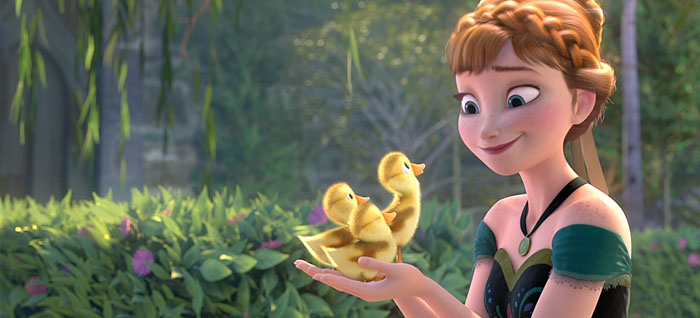
Anna is of course nervous to meet a prince; remember, she hasn’t had the courtly training Elsa has, and her isolation has meant the expectations placed on her are different from those of a “typical” princess. Perhaps providentially though, Hans is as awkward and shy as Anna. The two do laugh and talk all evening, forming a quick but apparently deep bond. The song “Love is an Open Door” explores how Anna and Hans feel they have found a “place” and a kindred spirit with each other. When Hans proposes marriage on the same night they meet, Anna immediately consents. She’s so eager for love, she can’t hear Elsa’s logical objection, “You can’t marry a man you just met.” Anna insists her relationship with Hans is true love, a common reason for marriage in Disney tales (and often, all the couple needs). But underneath her declaration, discerning viewers can hear more self-gaslighting–“Hans is the first and only one who loves me. If I don’t agree to marriage, I’ll lose him the way I lost Elsa.”
Unfortunately, Anna stands to lose a lot more than her first “true love.” After Elsa accidentally freezes Anna’s heart and runs from Arendelle in a fit of guilt, Hans takes over the kingdom. In the process, his mask drops. When confronted with Anna, who hopes he will cure her with true love’s kiss, Hans says, “Oh, Anna. If only there was someone out there who loved you.” He goes on to tell Anna, “You were so desperate for love, you were willing to marry me in a second.” His tone belittles, and his subtext is clear–“You are desperate, clingy, and stupid.” This is a classic example of a gaslighter using a partial truth to hurt a victim. Yes, Anna is desperate for love, because external circumstances have made her so. But she is neither dependent nor stupid, nor does she need someone like Hans to deserve love. Yet combined with Anna’s self-gaslighting, Hans’ version drives home the idea that Anna is in all aspects a lesser person.
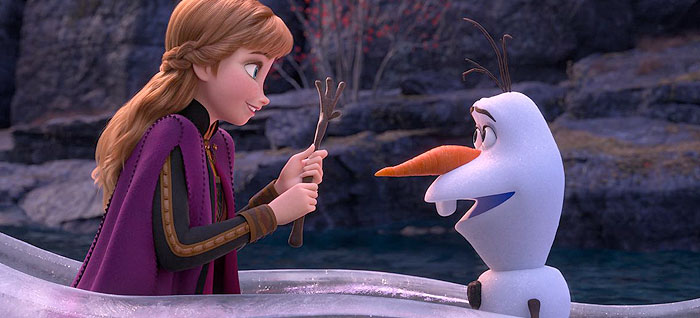
Anna gets to show her determined and devoted side after a talk with sidekick and friend Olaf, who helps her understand what true, “true love” looks like. Wise to Hans’ true intentions, Anna heads out to rescue Elsa, who Hans intends to kill. When Anna gets between Hans’ sword and her sister, she freezes completely, presumably “dying.” But Elsa’s embrace, and act of love, thaws Anna’s heart, reviving her. In the same turn, Anna’s determination and unwavering belief that Elsa is a good person who didn’t mean to hurt anyone, restored love to Elsa’s heart, frozen in fear. By the end of Frozen, Anna is ready to walk–or skate–forward with a new understanding of love, and a new understanding of the worthy person she has always been.
Elsa: Conceal, Don’t Feel
From early childhood, Elsa is taught the solution to her ice powers is, “Conceal, don’t feel.” Her parents drum this mantra into Elsa’s head, and physically cover the powers with gloves. In a way, the gloves are okay, as is the idea that Elsa should be careful. Her powers are potentially dangerous, and even when they’re not, it isn’t pleasant or convenient to have ice popping up everywhere. The problem is, Elsa’s parents don’t take a proactive approach to her powers. Rather, they imply her powers should be covered all the time, and can’t be controlled no matter what she does. They speak of Elsa’s powers in low tones behind closed doors, inferring they are always dangerous and never useful. Viewers have even noted that once Hans locks Elsa in the castle dungeon, she wears glove-shaped chains. The viewers point out, those gloves couldn’t have been fashioned quickly, meaning they must’ve been available for years, just in case Elsa’s parents felt the need for them.
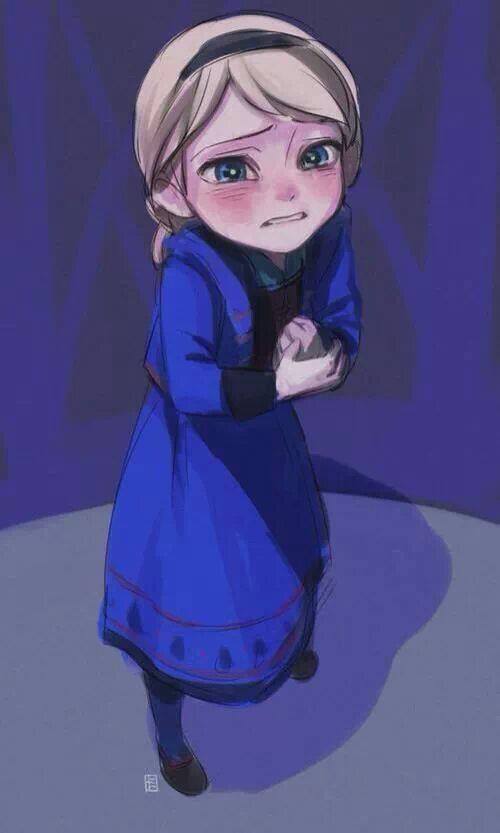
As a result, Elsa gaslights herself on a deeper level than Anna does, and with arguably more harmful messages. She feels she is a monster, and constantly frets about what her powers can do. Elsa won’t even let her parents or sister touch her, pleading, “I don’t want to hurt you!” She thinks of herself as a monster, and actually voices some of her gaslighting. “I can’t control the curse,” she says to Anna when the latter tries to get her back to Arendelle. “You mean well, but leave me be…stay away and you’ll be safe,” she goes on to sing in the “First Time in Forever” reprise. Elsa also takes on all the blame for Arendelle’s eternal winter state, failing to separate the physicality of her powers, and the fact that she was never taught how to use them, from who she is as a person. Just as Anna has gaslit herself into believing she must have love at any cost, Elsa gaslights herself into believing she is an evil force unworthy of love or regard.
Life-Threatening Gaslighting
Elsa doesn’t fall into Hans’ trap the same way Anna does. In fact, she barely interacts with him. Still, Hans’ threat to Elsa is more deadly, in a very literal sense. Hans seeks to kill Elsa, partially because she sits on Arendelle’s throne, but his motives go deeper than regicide. Hans sees Elsa as a threat, not only because she’s a queen but because she was inaccessible. That is, he originally planned to woo her to get to Arendelle’s resources but, as he cruelly tells Anna, found her too cold and unapproachable. Hans’ ensuing actions indicate he let his anger fester to the point of becoming desperate for a reason to discredit her.
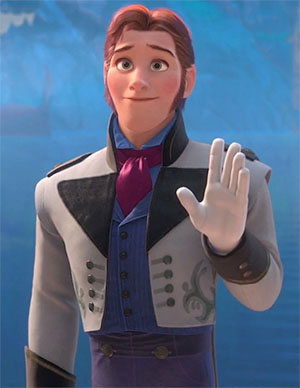
Elsa’s powers and her view of them give Hans the open door he needs. He knows Elsa has gaslit herself into believing she’s a monster, someone who can’t control herself, let alone a kingdom. He uses this against her twice during the climactic confrontation at Elsa’s ice palace. First, Hans begs an overwrought Elsa to talk things out. “Don’t be the monster they fear you are,” he says. His wording is meant to paint him as sympathetic, as in, he understands why Elsa would think she’s a monster, but he knows better and expects her to as well. What Hans forgets is, he’s already proven the sympathy is a lie. That is, Hans and Arendelle’s guards have already broken into Elsa’s ice palace, her sanctuary, the one place she felt safe and worthy as a wielder of ice magic. They have already deemed her sanctuary, her powers, and herself unacceptable. They have already accepted Elsa’s “monstrosity” as truth, so the use of the word is just the tipping point. Elsa ends up knocking out a guard who tries to subdue her, but then collapses unconscious, probably from the exertion of magic and her emotions. As noted, she wakes up a prisoner.
As Frozen heads to its resolution, Hans renews his determination to kill Elsa for her throne. He now has full support of Arendelle’s citizens, who will consider Anna’s death murder and thus, will insist on Elsa paying the price, queen or not. At this point, Disney has made a gutsy move in its exploration of gaslighting and psychological warfare. For the first time, gaslighting may result in death–physical for Arendelle’s royal sisters, but also the death of a good kingdom and dynasty. Furthermore, the gaslighting and warfare to which the sisters were subjected will mean the death of the actual true love they once shared.
Lessons from Elsa and Anna’s Gaslighting
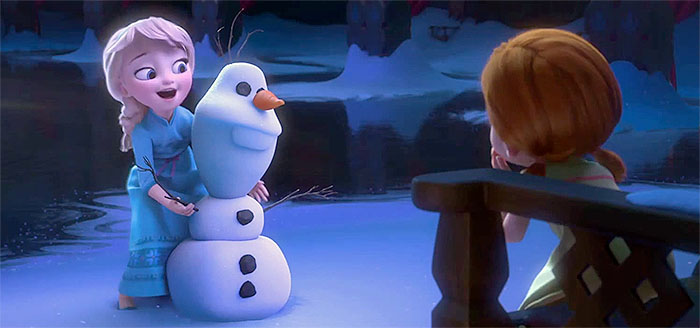
We don’t know exactly how Elsa works through her self-gaslighting and comes to a place of acceptance. However, we can infer Elsa’s imprisonment–another form of isolation–forced her to reexamine the life she’s led so far. She can no longer hide behind her role as queen, so she has little choice but to consider how and why she has shut Anna, her kingdom, and opportunities for acceptance out. A cut song, the reprise of “Do You Want to Build a Snowman,” examines this more fully. It’s mostly Anna’s song, but Elsa gets a poignant line where she admits, “I’ve frozen out the only friend I’ll ever know…I wish that I had been there for her.” We don’t get to see Elsa escape the dungeon, though the inference is she did so using her powers, which are not confined to her hands (note she uses her feet to build part of the palace during “Let it Go,” and might be able to “think” ice into existence, too). But once Elsa ventures into the final ice storm, we know she has broken through the gaslighting to the truth about Anna’s love for her. More importantly, Elsa has broken through to the truth that she can respond to that love, keep receiving it, and keep giving it back.
The beautiful ending of Frozen gives viewers plenty of lessons about how to handle gaslighting when the gaslighter is the self. For instance, Elsa’s last line in reference to Arendelle’s gates is, “We are never closing them again.” On its surface, the line references Arendelle’s status as a kingdom. It will remain physically open, and friendly, toward citizens and allies. There’s a symbolic interpretation of the line, too. In committing to leave Arendelle’s gates open, Elsa is committing to opening herself up more. She will function not only as a “cold,” “good girl” queen, but a true sister to Anna and an engaged ruler to her people. Similarly, Anna will leave her “gates” open, but will be more circumspect about who “enters” and how much intimacy she gives them. She is safe enough to do this thanks to Elsa’s alliance, but also because she too has learned how to balance intimacy and discern motives. As any real person should, Anna has also learned how to read her own motives. That is, if she finds herself too eager to embrace a relationship, trust someone, or share information, she now knows why. She can acknowledge that trigger and step back from it, finding safe people in Elsa, Olaf, or Kristoff.
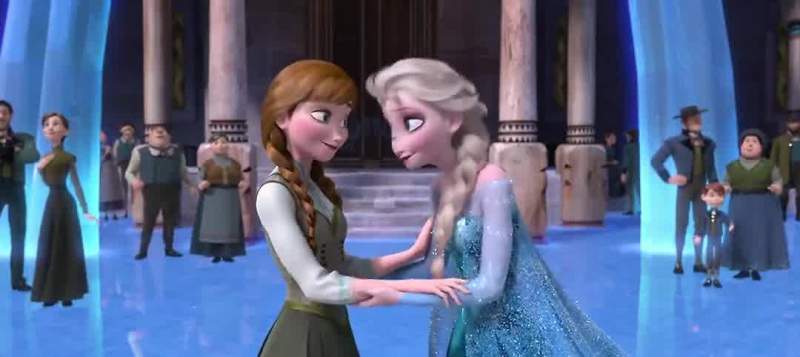
Real people who find themselves in Anna and Elsa’s position would do well to assert themselves before the gaslighting starts, if possible. For instance, Elsa’s parents never meant to gaslight her into believing she was dangerous or unworthy of socialization. Yet, their good intentions went awry, as sometimes happens even in the most loving relationships. This translates well to real life. Say for example, a woman like Elsa has a “difference” that others misunderstand or fear. Perhaps she’s autistic, or LGBTQ+. Perhaps she has an invisible disability that she or others would rather hide, or has past trauma that discourages her from trusting others. If “concealing” to the point of mental detriment is encouraged, Elsa’s counterpart should speak up and ask that her difference be acknowledged in a positive way. She can do this with professional and personal help, such as from family and friends. But no matter how she chooses to do it, assertiveness is perhaps her best source of protection. And if her assertiveness does not receive a supportive response, she should seek out constructive ways to seek support and express herself.
What about a woman like Anna, who is gaslit in a romantic relationship? Again, Anna’s example is a gutsy one; until her, Disney had not explored this idea, perhaps because they did not want their female audience to fear romantic love. However, Anna’s story doesn’t have to end in fear for real audiences. Her biggest takeaway is less about fear than it is about the confidence and safety young women can develop in their relationships. That is, Frozen invites girls and women to discuss not only why Anna was so quick to get personal with Hans, but how fast the relationship moved. They can look for subtle signs, such as during “Love is an Open Door.” Note that Hans always sings second, after he knows what Anna means to say, which he then uses to manipulate her (ex.: the “finish each other’s…sandwiches” line). Also, note that once Elsa absconds, Hans is the one to take over Arendelle’s administrative duties. Anna’s role as princess is never considered, perhaps because she has already shown Hans her lack of confidence.
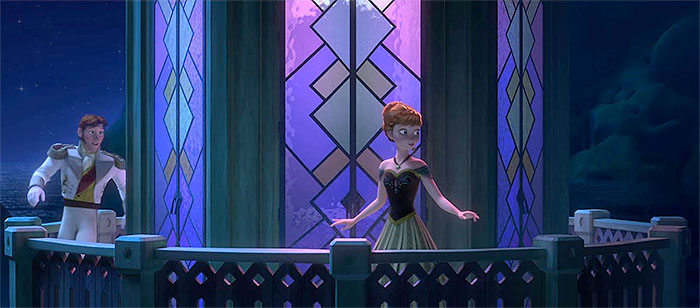
Such subtle signs–a lack of confidence, almost instant trust, the urge to “sync up” with someone just to agree–can warn women how vulnerable they are. But even after gaslighting, these same women can use their experiences to stay safe. Hyper-vigilance isn’t necessary, but a different approach certainly is. Someone like Anna will probably take more time getting to know the next person they intend to be close to, delving more into their personality and values. They may also question behavior that looked innocuous before, but now may not be, such as offering to order everyone’s food at dinner or questioning what someone is or isn’t capable of doing.
Mirabel: Gaslit for the Good of Others?
For many years after its release, Frozen and its accompanying sequel were Disney animation’s biggest hits. Olaf was every kid’s favorite cuddly sidekick, Anna and Elsa’s outfits and toys were hot items every holiday season, and Elsa’s anthem “Let it Go” wasn’t going anywhere anytime soon. Proceeding movies such as 2016’s Moana did challenge Elsa and Anna’s reign, but didn’t quite knock them off the throne. That honor went to Encanto, which hit streaming services in winter 2021. A streaming release rather than a theatrical one made Encanto instantly accessible to everyone. Thus, its characters and songs met and arguably surpassed the popularity of Frozen in record time. But more than the songs, individual characters, and setting of the colorful and magical casita, viewers loved and identified with the Madrigal family dynamics.

Starting with Abuela Alma Madrigal, each member of the Madrigal bloodline receives a particular innate gifting when he or she turns five. Camilo can shapeshift; Luisa possesses super strength; Isabela has floral powers similar to Elsa’s ice ones. During opening song “The Family Madrigal,” protagonist Mirabel explains these and other gifts, and communicates how proud she is to be part of her family. The one thing Mirabel doesn’t mention is her own gift, because she is the only blood Madrigal who didn’t get one. And while Mirabel’s attitude and actions insist she’s loved as an equal, the story surrounding her sets her up as a lesser family member. It sets her up to be gaslit too, but unlike other heroines, Mirabel’s gaslighting is not just about her personal journey. That element exists, but Mirabel is basically gaslit “for the good of the family.” Therefore, when she overcomes gaslighting, she does it for the good of herself and the others who experienced its trap in less obvious ways.
“What About Mirabel?”
“What about Mirabel?” the village kids ask over and over during “The Family Madrigal.” Embarrassed at the truth behind the question, Mirabel ducks it with an ultra-fast reprise of all her family’s gifts, until Cousin Delores casually mentions, “Oh…Mirabel didn’t get [a gift].” Mirabel acts like this is okay–she’s still a part of her close, loving, and special family, after all. But as one kid says, she’s in denial. And as little Antonio’s gifting ceremony approaches, Mirabel can no longer stuff down the painful memory associated with her own ceremony more than a decade earlier. Like all her siblings and cousins, Mirabel touched Casita’s magical candle, seat of the miracle that gives the family its gifts, and approached the door that, when touched, bestowed an individual gift. The door was supposed to light up gold and transform into Mirabel’s tailor-made, gift-centered room. Yet it never lit up. Mirabel’s lack of gift was broadcast to the entire village, and without a room of her own, Mirabel was consigned back to the nursery. She still lives there well into her teens.
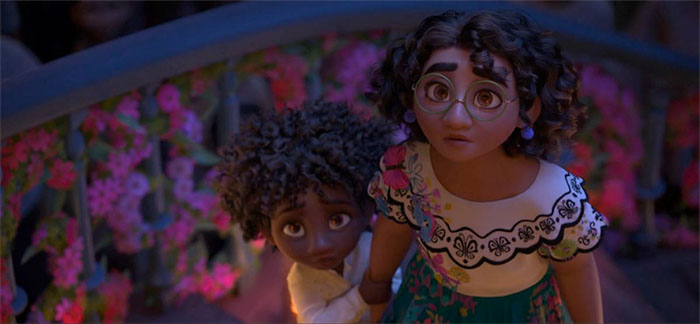
Some members of Mirabel’s family try to empathize and encourage her. On Antonio’s gifting day, Mom Julieta recognizes Mirabel is trying to do too many tasks at once, in order to make up for her lack of gifting. “You are just as special as anyone in this family,” Julieta declares, healing a cut on her daughter’s hand with a homemade arepa. Dad Augustin agrees, pointing out that he and Tio Felix don’t have gifts either because they aren’t blood Madrigals, but they are still loved and valued, as Mirabel is. Little Antonio sticks close to Mirabel throughout the day, knowing she understands better than anyone why he is nervous about his ceremony. “What if it doesn’t work?” he asks her. Mirabel assures Antonio he will get an awesome gift, and on the off chance he doesn’t, he will still be loved. Plus, he will still have her as a roommate and an ever-loyal cousin.
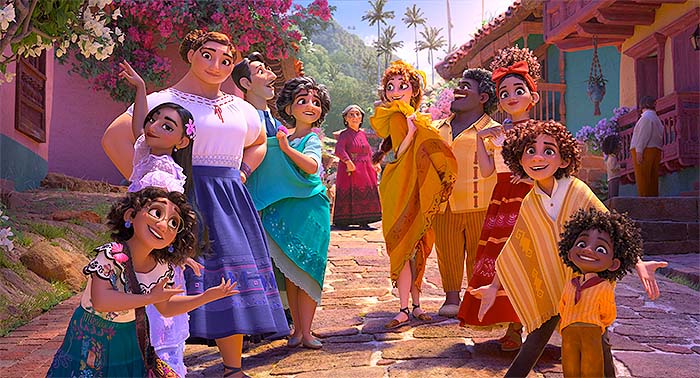
However, other Madrigal family members don’t know how deeply Mirabel’s situation affects her. In fact, while they don’t necessarily mean to be, some are downright cruel or callous. Mirabel’s older, “perfect” sister Isabel makes clear she is always in the way, and that the harder she tries to help, the more annoying and useless she is. Abuela Alma is a bit more subtle, but she says that on important days like gifting day, everything must be perfect. “Therefore, some of us…[should] stay out of the way,” she clarifies. As Mirabel and the rest of the family knows, “Abuela runs this show.” To deny a need for perfection, or to go against Abuela’s orders, is to harm the family Madrigal and perhaps endanger the miracle that makes the family special. So Mirabel obeys, staying out of the way. She stays so far in the background, she’s actually left out of a family portrait at the end of the gifting ceremony. She tells herself, “Don’t be upset…don’t feel regret or sad…I’m still a part of the family, and I’m…totally fine.” But as her feelings and accompanying song swell, viewers know she’s not fine. Mirabel has been defined by what she can’t or won’t ever be able to do. She’s considered incapable of doing anything good, even when she helps her family or shows love to them and their home. Thanks to Abuela, Isabel, and inadvertently others, Mirabel is already being gaslit. “You don’t have a gift, which is a problem. Since gifts come from inside you, you are a problem. You might be tolerated or even loved, but you do not and cannot belong.”
Saving the Miracle…or Something Else?
Mirabel expects to return to the way things were. She will continue stuffing the “unspoken, invisible pain” of being giftless, she will eventually succeed, and she will continue as a loved-but-lesser family member. These plans change though, when Mirabel notices Casita starting to crack. The cracks are small at first, and when Mirabel touches one, it immediately heals. Yet in short order, Mirabel notices more and more cracks. She hears the creaking and cracking of a suffering house. Worst of all, Mirabel is the only one who sees Casita’s candle briefly extinguish. Worried the miracle is in danger and might vanish forever, Mirabel determines to save it for the good of her family. The internal desire underneath–the desire to claim worth and a designation as special–is unspoken, but painfully clear to viewers who just watched the full extent of Mirabel’s pain.
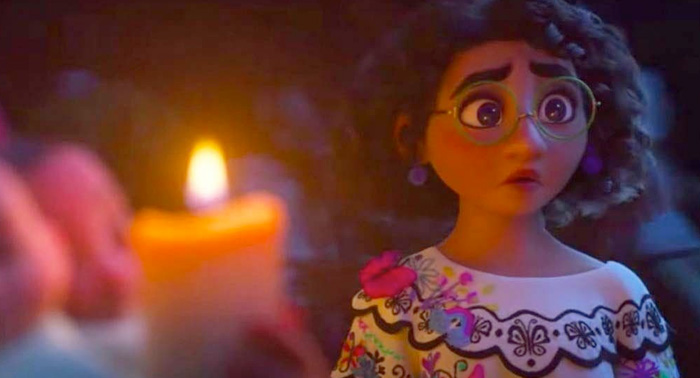
At first, it seems Mirabel will easily “save the miracle.” When she bursts into Antonio’s party to announce the candle has gone out, Abuela swings into action. “Show me,” she commands, most of the village following her to see what’s going on. But when Abuela investigates, the candle is lit again, and there are no cracks to be seen or heard. Abuela glares at Mirabel, scolds her for being disruptive, and implies the combination of strong magic and strong drink may have overwhelmed her granddaughter. Later, when Mirabel tries to convince Julieta to believe her, Julieta is more sympathetic but gaslights her. “Today was very hard for you,” she says, implying Mirabel’s real problem is jealousy and sadness. For Julieta, Mirabel’s problem is easily fixed, and for Abuela, it’s just a ploy for attention. Mirabel ends the night discouraged and ashamed, but no less determined to find the truth.
Throughout Encanto’s second act, various family members unintentionally gaslight Mirabel into thinking there is no problem with Casita, or that she’s the one with the problem, imagining things because she has no gift. Older sister Luisa denies that the physical and mental pressure of super strength is getting to her, even when Mirabel sees her eye twitching and hears her uncharacteristic labored breathing. When Mirabel points out these symptoms, Luisa actually yells at her, “NOTHING’S WRONG!” In other words, you’re making this up, stop talking about it. Later, when Mirabel notices one of Isabel’s flowers blanching and wilting, Abuela is quick to pluck it away so no one else can corroborate the incident. Even evidence the whole family can see, such as Tia Pepa’s weather powers drifting into stormy territory, is passed off as normal. As Cousin Delores bluntly tells Mirabel, “The only one who thinks [anything is wrong] is you.”

By now, Mirabel’s already fragile self-esteem is cracking as much as Casita. Although she doesn’t speak to the idea, it’s not a reach to conclude Mirabel is beginning to believe she is making up the loss of the miracle and magic. If Mirabel were less tenacious and clever, she might actually start to think she’s mentally unstable, as a lot of gaslighting victims do. Yet press on she does, until she discovers Tio Bruno, the uncle “we don’t talk about” because his gift, visions of the future, has been branded totally negative. Several years ago, Bruno tells his niece, he had a vision so tragic his only choice was to leave. “My gift wasn’t helping my family,” he explains. Bruno isolated himself, choosing to live in a tower in the family’s walls with semi-anthropomorphic rats for company. Meanwhile, his family refused to acknowledge him except in the negative, such as when Delores admits she can still hear him “muttering and mumbling” and that he has caused the family to “fumble.”
Mirabel convinces Bruno to show her his vision, but it’s cracked beyond understanding. Undeterred, she asks him for one more vision so she can save Casita. That vision, as well as the broken one, frightens and angers Mirabel. The intact vision shows she must embrace Isabel, the sister who has been overtly cruel to her and always treated her as less. The broken vision may imply Mirabel is the cause of her family’s troubles, just like Bruno was before. Indeed, when Mirabel gives her mission one more shot, she’ll face the deepest pain she ever has. But she will also face the opportunity to save more than a miracle.
The Embrace of Truth
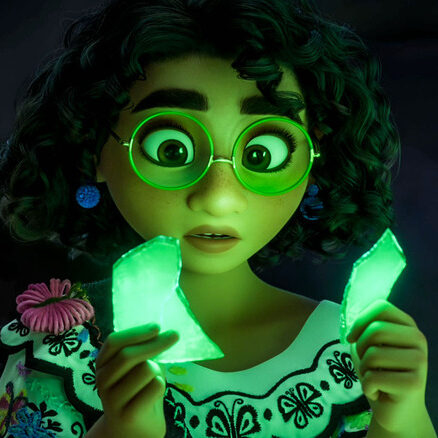
Mirabel takes Bruno’s vision literally, thinking if she simply hugs Isabel, everything will go back to normal. However, Isabel is still fuming at Mirabel because of the fiasco that was her engagement dinner to Mariano Guzman. During said dinner, Mirabel engaged in some darkly tinted slapstick to hide Casita’s ever-widening cracks, and the fact that some gifts, like Luisa’s, were becoming much weaker. She didn’t succeed, Isabel did not get a proposal, the entire celebrating village was drenched in Pepa’s rain, and Casita’s dining room fell apart. Once again, the spoken and unspoken message was, this was all Mirabel’s fault and no one else’s. Even Augustin and Julieta were shut down when they tried to tell Abuela she is too hard on Mirabel, because, “You should be thinking of the family!”
Mirabel finds Isabel in her room, surrounded by thick walls and carpets of perfect flowers and completely unwilling to talk. “Luisa cannot lift an empanada! My fiance’s nose looks like a smashed papaya,” she rants. She continues blaming Mirabel for how upset the rest of the family is, capping it off with the command, “Apologize for ruining my life!”
Isabel’s assertion is the boldest gaslighting statement in any film we have discussed. Mirabel has been faced with the ultimate accusation a gaslighting victim can get. Not only are they a problem, not only are they potentially “crazy,” not only do they make things up to get attention, but victims allegedly ruin other people’s lives. There is nothing good or worthy about them. Faced with such an assessment, Mirabel might crumple for good. To viewers’ surprise and perhaps relief, she gets angry and throws the assessment right back. “”Your life is perfect! You can still marry that big, dumb oaf! You selfish, entitled princess!”
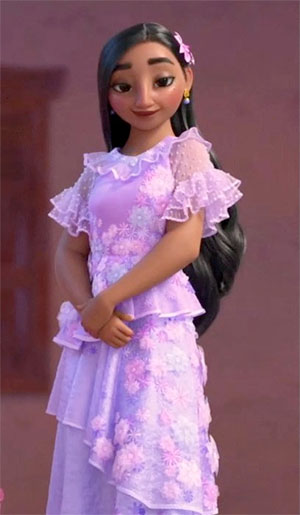
At this point, the plot’s trajectory twists again. Viewers might have expected Isabel to argue back in such a way that the situation devolves and Casita’s state only worsens. Instead, Isabel exclaims, “I didn’t want to marry that dumb oaf, I was doing it for the family!” For the first time in her life, Isabel admits the truth–and conjures a sharp, asymmetrical flowering cactus. This touches off her song, “What Else Can I Do,” during which, with Mirabel’s help, she explores the extent of her gift and the extent of her emotions. Lyrics like, “What could I do if I just grew what I was feeling in the moment” and “It’s not symmetrical or perfect, but it’s beautiful, and it’s mine,” show just how free Isabel feels. Mirabel’s sung question, “How far do these roots go down” explores Isabel’s psychological damage, and how much she needs to heal. Indeed, by the time the song ends, Isabel’s room is “a hurricane of jacarandas…hanging vines” and other diverse flora. Isabel is covered in clashing, imperfect, but amazing colors. And Isabel and Mirabel are embracing for real. That embrace heals a major crack in Casita, indicating full restoration isn’t far behind.
A New Foundation, Minus the Gaslights
Healing almost doesn’t happen, thanks to more gaslighting. When Mirabel tries to explain what she’s learned–Isabel wasn’t happy, Luisa was carrying too much, and so on–Abuela sinks into a cold rage. She’s incensed Mirabel would dare talk to anyone about Casita’s cracks, or allegedly put words in their mouths about being unhappy as part of family Madrigal. “Of course Isabel is unhappy, because of you!” Abuela exclaims. “Everything…is because of you! I don’t know why you weren’t given a gift, but that is no excuse to hurt this family!” Even when Mirabel insists that she loves her home and family–that everything she’s been doing is for them–Abuela believes her granddaughter is selfish, jealous, and determined to hurt and destroy everything and everyone the miracle has built. This reaches the point that Mirabel uses Abuela’s words against her. “The miracle is dying because of you!”

This scene ends with Mirabel trying to save the candle before it topples and extinguishes for good. That, coupled with Mirabel running off alone afterward, has made many viewers take to the Internet to proclaim Abuela Alma is the villain of Encanto. indeed, in some ways, she’s worse than any of our other gaslighters. She is a biological family member who not only her primary victim, but a whole community, has trusted, and she broke that trust. She is apparently capable of showing love to and pride in everyone except Mirabel, who is singled out not because she’s convenient, but specifically because of a trait she didn’t choose and can’t control. Plus, Abuela Alma has already allowed ostracism of one family member, apparently without remorse. Who’s to say she wouldn’t do it again?
If we look closer though, we find Abuela needs and is worthy of healing as much as anyone in the family. Deceased Abuelo Pedro’s song “Dos Oruguitas” explores the love between the grandparents, as well as the trauma Abuela went through when she lost her husband and had to get triplets out of a war-torn country as a single parent. She apologizes to Mirabel and tells her story when the two are alone, underlining that while this doesn’t excuse the trauma she inflicted, it explains her motivations. Abuela also admits that, in the years since the miracle first occurred, she has forgotten its roots. She was focused on the family’s gifts, rather than who the miracle was for and who her family is, with or without magic. “The gift is you,” Abuela tells her granddaughter. “The miracle is you.” Abuela and Bruno were half right; Casita does change because of Mirabel, and that change involved trauma and hurt. But because of Mirabel, the miracle and family have their true focus back.
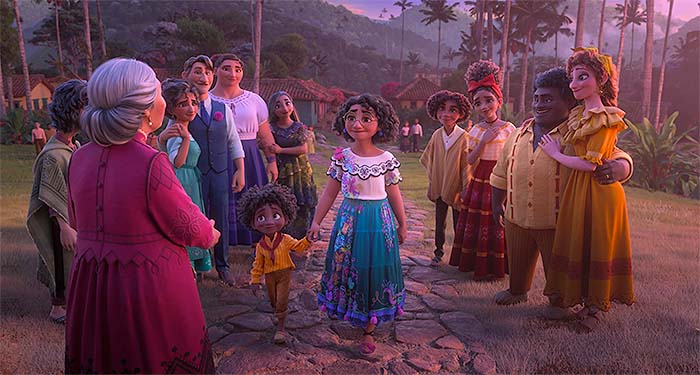
The healing of Casita and the family culminates in the movie’s last song, “All of You.” In it, Mirabel declares, “We need a new foundation,” and the family and village set about rebuilding Casita. During the song, Bruno, who found and restored Mirabel to the family, declares he is back for good. He and the rest of the family receive the love they have missed out on from each other, and the village accepts that while the Madrigals are a special family, they are more than their gifts. At the end of the song, Mirabel still doesn’t have a gift, if what that means is magical powers. However, her family and village have recognized her acts of heroism. More importantly, they recognize her innate, vital gifts like empathy and observation. This helps Mirabel finally settle into her personhood and sense of worth. When Antonio gifts her a new doorknob the family made for her, and invites her to open the front door of the new Casita, viewers know Mirabel is free and can thrive.
Lessons from Mirabel’s Gaslighting
Mirabel’s experience with gaslighting is perhaps the hardest to pin down and learn from. Unlike our other heroines, Mirabel didn’t experience gaslighting at the hands of a villain. Arguably, none of the gaslighting she experienced was intentional. Some might claim it didn’t exist because whatever pain Mirabel experienced was tempered with love. But trauma victims can experience love, and gaslighting can happen even in the best of situations. The truth is, Mirabel might have the most important gaslighting lessons of all.
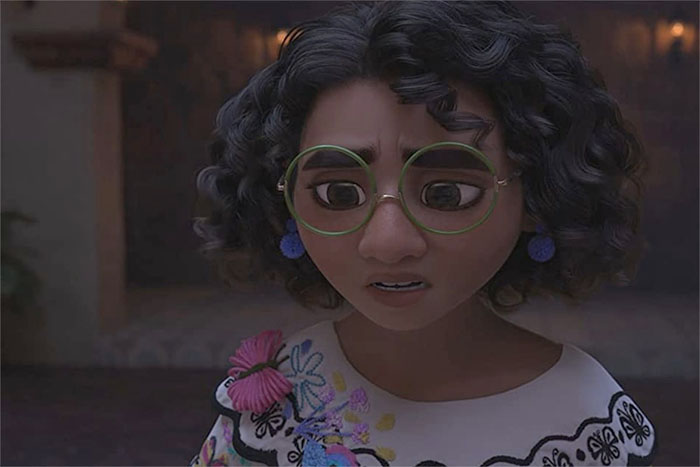
The most crucial lesson Mirabel gives us is, gaslighting must be acknowledged no matter where it comes from. It must be dealt with, intentional or not. As Mirabel discovered, this can be difficult, especially if the gaslighters are trusted, treasured people like family members. As she also discovered, calling out gaslighting should not be done in anger. Instead, if possible, dealing with unintentional gaslighting should be done in a physically and emotionally safe place. It should happen in a place where everyone is allowed to say what they need to, and where explanations are given, but excuses are rejected. Sincere apologies and plans to change behavior or dynamics should be the outcome. If that can’t happen, professional intervention may be needed. Ideally though, family and other bonds will remain intact.
Mirabel also shows us gaslighting can manifest itself in other “symptoms.” Most people who experience gaslighting won’t see physical evidence like their houses falling apart. They may, however, notice family or close friends exhibiting signs of depression. They may notice physical symptoms like Luisa’s eye twitching, or headaches, stomachaches, etc. Gaslighting victims will probably notice emotional symptoms within themselves, such as self-doubt, worry about their perceptions, or a tendency to lash out, as both Mirabel and Luisa experienced. When those symptoms happen, it’s best to reach out to a trusted person, including professionals, right away. Otherwise, the “cracks” will worsen, to the point that like Mirabel, someone might get physically or otherwise irreparably hurt.
Finally, Mirabel’s experience has a unique lesson for gaslighters themselves. Remember, gaslighting is not an unredeemable sin; gaslighters are not necessarily villains. If a gaslighter is otherwise a safe person–that is, he or she is acting unintentionally or out of real love–it may be a good idea to examine where the gaslighting is coming from. If gaslighter and the gaslit can work together, they may discover some deep roots, such as Abuela’s trauma. Once those roots are discovered, they are more easily dealt with, and the gaslighting itself more easily understood and forgiven.
Exchanging Gaslighting for Real Light
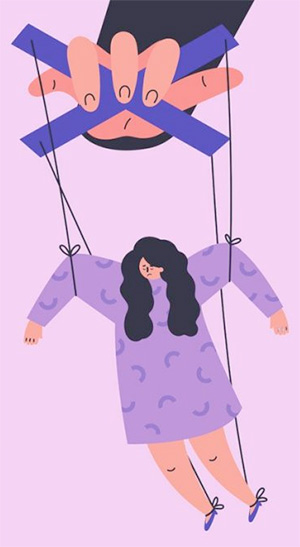
Gaslighting is a common, if often unspoken, issue for Disney heroines. Like many women of the real world, Disney heroines are often led to believe their emotions, motives, wants or needs are nonexistent, unimportant, selfish, or even dangerous. They are led to believe they are lesser people, not always because they are women, but because when compared to other, stronger characters, they are weaker women. Thus, heroines’ gaslighters perpetuate the message that women in general are meant to function as prey.
This level of gaslighting can be difficult to take in, especially when cloaked in the relative innocence of Disney animation. If anything, such deep analysis of psychological warfare might seem out of place within Disney. However, studying gaslighting in animated heroines is important. Such a study underlines how far we as a society have to go in helping women maintain equal voices. It also helps girls and young women who have not been exposed to gaslighting learn what to look for, how to respond, and how to break the cycle. The more women, real and fictional, who break this cycle, the safer real women will be and the better their voices can be heard.
What do you think? Leave a comment.











We need more Disney movies that teach young people about abuse.
Here’s something to think about. One of the versions I read as a little girl of Rapunzel, is one where Rapunzel repeatedly invites the prince into the tower and the old woman finds out only when she realizes Rapunzel is pregnant and cuts off her daughter’s hair as a mark of shame and uses it to lure the Prince up the Tower only to blind him. The Prince wanders the wilderness blind until he hears two babies laughing and finds Rapunzel with their children. Rapunzel weeps with joy and her tears heal the Prince.
This version sticks with me because the old woman who insists on keeping her daughter forever pure is the villain and not Rapunzel and the Prince for having sex out of wedlock. In fact, instead of being considered unpure for losing her virginity and therefore having no value/power Rapunzel’s love is what heals the blind Prince who still went into the wilderness to find her.
This story is so fascinating and I can’t wait to see more retelling in the future.
The story I have read that she was not the mother but a wealthy woman (witch) living in a big house and Rapunzel’s father brought herbs from her garden to cure his wife’s illness and in exchange she wanted his first child. When by that herbs magic the girl is born she was given to the witch and the witch kept her captivated in a tower. Till a prince arrives by the tower and climbs up with the hair that always used to by the woman. Rest is same as you read. I read that story as a 7-8 years old and I thought it was pretty scary. I didn’t have any idea about sex out of wedlock and anything but now that I think about it, the witch treated her as her possession similar to the herbs she was growing and couldn’t think of anyone plucking it. So she punished the prince who “ruined” her. Its that age old “virginity” myth of women where she is compared with a flower to be protected, cared for and admired from distance and once it’s “plucked” it loses all values and withers eventually.
I enjoy all versions and retelling of Rapunzel.
The worst villains are the parent villains; they’re supposed to be the people that have your back the most, but when THEY’RE the asshole you have to look out for, then that just does a number on your psyche.
Mother gothel is a wonderful representation of a narcissist. They use you to feel better about themselves and they convince you that you need them. My father would never compliment me, he would push me down daily, calling me dog, slut, idiot, inferior being. But he would brag to his colleagues and friends how smart and great his daughter is. When I left home at 22, after years of mental and physical abuse, my dad told me “you will be crawling back, you will never make it alone”. But I was a grown woman, with a steady job, and I could support myself through my studies. But my father didn’t want me to be independent. He didn’t want me to leave home because he would lose his grip on me.
I am surprised more people are not taking about this. I’d actually posted a google review about Encanto regarding this because I felt no one had mentioned it in any of the reviews. Instead they all are talking about ” cultural inclusivity”.
The truth was I felt blindsided walking out of this movie. Like many others I expected some big journey based on the trailers. And, while I did appreciate the attempt of the movie to be more emotional, I thought that Disney missed the mark on the lesson.
It told everyone that at least 10+ years of emotional abuse, gaslighting, and social ostracization can be swept under the rug from a simple sorry due to “the importance of family”. I think we can agree that this is absolutely false. There are unforgivable offenses and kids should not be forced to forgive or rug sweep “because family.”
Also, it irks me that Disney got away with this. If it were any other platform, by any other company, and not a cartoon for kids then there would have been a trigger warning for adult situations and abuse. Disney should have included this at the beginning of the movie since they deliberately misled people in the commercials. Do better Disney!
I felt so incredibly bad for Mirabel from the start of the film to the finish. The way the family treats her is just consistently alienating to openly hostile throughout. Even her mother seems to kind of miss the mark when comforting her, and is unable to recognize that Mirabel isn’t upset because she “isn’t special” but because she “isn’t special enough to be worthy of the love and basic respect this family is intentionally and unintentionally withholding from her.” Mirabel throughout the film puts in all of the emotional labor “fixing” the family and so many of her interactions with them are sort of painful to watch until Mirabel says the correct combo of empathetic and insightful words, and is then finally rewarded with love and honesty.
Even the damn house has laid out this responsibility on her. No gift for her, literally evaporates it in front of her eyes and won’t make a literal space for her, because it’s her role to heal the family and this lack of gift is all part of its magical plan to groom her into being the family’s abused therapist.
Also Bruno. What. I get the film needs to keep some of the darker stuff lightened up but um. Maybe they shouldn’t have played his behaviors and trauma for laughs?
Yes. I really hated the film because it presents such a harmful and dangerous message, that abuse is excusable, that it’s “because they love you”, that as long as it gets revealed in the right way everything will be fine and they’ll apologize and change their ways and everything is filled with love and no lasting damage.
They treat Abuela like a hero when she never even did anything for them. She didn’t save them, didn’t commit some act of bravery for the family. She suffered. And that’s horrible. But it doesn’t make her a hero and it doesn’t excuse the decades of abuse she inflicted upon the entire family.
Exactly, the film definitely left a bitter taste in my mouth because of this.
I wish they could have had a more realistic ending, where all the characters recognized that you can love each other and see each other’s point-of-view without forgiving them. I’m waiting for THAT movie. Maybe I should write it.
I legit think because most people have any idea this is what narcissism is. That’s why I’m stoked this is so popular because I can point to this film and say:
“The grandma, but my mother. My entire life.” And they will understand a fraction of my reality.
When our family watched Tangled for the first time my husband looked me dead in the the eyes & said, “Your mom was 100% Mother Gothel. Even looked like her!” I cannot watch Tangled. Cause he is right. Give her brown eyes & she is dead ringer. Even Loved gold & that deep ruby red.
Amazing article. Another triggering yet empowering movie you should all see is Shirley Valentine. It’s a story about a housewife who has had enough of abuse from her husband and decides to free herself from him and to rediscover herself in the process.
I know some people might not agree with me on Inside Out, but watching it actually made me feel intense anger towards the main character, the daughter. My home life with a NStepdad (who had multiple issues, not just narcissism) was emotionally unbearable, and I’ve blocked out a lot of my abuse and trauma from living under the same roof as him.
Watching that film and the reactions the daughter had *just* because her parents wanted to move?? I think my feelings of anger stemmed from this idea of ‘she doesn’t have it that hard. Wtf is she complaining about? At least her parents are still together, they love her, and she isn’t being abused.’ I felt angry that I had to deal with much, much more and never said a word or acted out at all. Watching that movie made me mourn my 9-year-old self. It was intensely triggering and never came to a satisfying conclusion for me.
I would recommend exploring this kind of anger directed towards the main character (a child) who is going through a developmentally difficult transition while leaving the social structures she had. That’s more of a typical life stressor for kids that age, and I wonder if you’re connecting with that anger because you are really connecting with how unjust your abuse was. When movies make me angry like that, I have found its always worth sitting in it and asking what it is that shakes me so hard? That’s a powerful emotion and I think it’s worth processing!
I had to move and I understand it. It’s taking you away from what you know and throwing you into unfamiliar territory. Yeah her life didn’t seem that bad but it’s a kids movie, maybe they didn’t want to get too deep into the dark realities. Inside her mom’s mind was sadness, inside her father’s was anger. I can relate to that environment.
I think I moved over ten times between the ages of ten and sixteen. It is quite true, moving is never a fun experience and it uproots you from everything you know and love, a lot of the time from what brings you comfort.
You’re definitely right. It’s a kids movie. I think I just took it way too personally when I saw it. But to be fair, a lot of kids had it way worse than that girl growing up and I feel for them should they decide to watch this movie. I know a Disney movie can’t really truly show the toxic environment that abuse cultivates. Maybe the reason I get so angry when I watch it is because I wish I reacted how she did when my life felt like it was falling apart. I didn’t even realize that was an option. I thought I just had to take the abuse and hide it.
I appreciate you taking the time to respond thoughtfully & show a different perspective!
Tangled definitely started the wave of Disney exploring psychological developments and topics.
After it’s release, we got Big Hero 6 which explored grief. Frozen and Frozen 2 explored mental illness and coping. Pixar’s Inside Out explored complex human emotion. Zootopia explored biases. And Encanto explores familial generational trauma.
I hadn’t realized this theme within Disney movies, but is certainly true. I appreciate how none of the movies go over the top with their exploration though to the point that it detracts from the plot
It was shocking how real Mother Gothel was to me. The constant gaslighting, the passive aggression, insulting you and claiming it was only a joke when you naturally get insulted and the first time I heard her say “oh, now I’m the bad guy” after doing something toxic I got chills.
There’s little doubt the writers based her on a dozen oh too real mothers.
This is why stories that break from the norm matter. When your mother gaslights you constantly to mistrust your instincts AND you’re told by your family and “friends” that your parents love you and mean well / are making innocent mistakes, you really believe you MUST be an ungrateful, problem child. I really had to learn from a damn Disney movie that my mom had been abusing and manipulating me my whole life. Wow, what a surreal experience.
We often think we have to stay close to our family members but there are no exception, sadly it’s like anything else people can be toxic.
My childhood was harsh and most times I can understand how Rapunzel feels having never ending double takes and trying to grasp onto what is the truth. I myself feel like there were moments I started copying the criticisms, deceit, perspectives, and passive aggressive jokes or break a ways from the subject.
My mother is good but she is unconsciously gaslighting, repeating, and projecting herself onto me. She sometimes is similar to mother Gothel where she always points out that I’m crazy and she is ultimately right. And exactly like Gothel she diverts any blame, accountability, and goes into extreme victimization of herself and telling all she has put up with for me. Yet She uses me for a lot. The people who tell the “they love you, we all make mistakes even parents” is normal and quite understandable, It makes me feel better than accepting that there underlyingly is a problem. As someone not yet a adult and is quite scared of the world, despite my mother unconsciously knowing she does this I am still affected by all the problems regardless. How do people like me Sort through this kind of stuff in actual life? How do we break the created mold of these things?
For me, it was moving away, making very close, healthy, supportive, loving friendships where I could be vulnerable and treated with compassion. Then, starting therapy and recognizing what had been done to me was unfair, traumatic, and not my fault. And eventually, telling my parents that they will not have a relationship with me unless they admit fault and go to therapy themselves. Unfortunately this means I don’t have a relationship with my parents. It was a good decision for my health and happiness, but of course it still hurts. If you’re not able to make progress with your abuser and currently not able to get away just yet, please confide in friends, family, peers, mentors, coaches, or teachers you can trust and be vulnerable around with their support, compassion, and discretion. When we get away from relying on our abusers, we can make progress and heal. I genuinely wish you all the best.
One of the scenes in Tangled I find most interesting and disturbing is when mother gothel is about to fall out of the tower and Rapunzel reaches for her-showcasing regret and distress at the sign of her captor falling to her death. Mother Gothel was able to manipulate and gas light her so well with her subtle abusive tactics that Rapunzel feels sympathy for a woman who kidnapped her, gagged her, and stabbed the love of her life right before her very eyes.
I wish I’d known this going into Encanto. I hated Alma so much, in a way I doubt people who weren’t raised by a narcissist can understand.
I especially hate how, when she found Mirabel crying after the casita fell, she immediately went into her own sad backstory, before even saying, “I’m sorry.” It comes off as an excuse for her shitty behavior. Then Mirabel has to be the one to say, “Oh, I see everything so much clearer now because you suffered so much!” I would have thrown Alma’s words back in her face by adding, “…but it’s not an excuse to hurt this family!”
Thank you for the warnings so I know how to navigate content with my kids.
I just finished a second viewing of Encanto and felt that it was a beautiful depiction of the generational affects of trauma.
The grandmother watched her home burn, watched her husband be slaughtered, and before having any time to process her grief, finds herself head matriarch of an entire village literally formed by her desperate need to to protect everyone, while raising three infants alone.
Her trauma becomes her children’s trauma, becomes their children’s trauma, until one of them was able to break the cycle.
I’m not even sure I’d call the grandmother a narcissist; there’s a lot of similar symptoms in untreated PTSD which, coupled with the immense burden of responsibility the magic had given her family, made her actions understandable, though absolutely inexcusable.
Tangled was very therapeutic for me to process my relationship with my mom and finding the courage to move out.
Mother Gothel is such underrated. Along with Frollo, they are the only Disney villains who use emotional violence : they are so realistic.
Do you know that abusive parents never allowed their children to watch Tangled because they were afraid of Disney’s representation of parental abuse.
Not to mention they both are blind to how bad they can be Frollo thinks he can do no wrong while her persecutes and burns down Paris. While Gothel kills and abuses those Rapunzel cares about.
I just remember my mom losing it when i as an 8yo child (not thinking of the implications) compared her to mother gothel.
I watched it with my abusive mother in theaters, and I made the mistake of constantly looking back and forth at my mother during the song “Mother Knows Best.” She was pissed, to say the least.
When I watched this the first time with my mom she was literally agreeing with Mother Gothel throughout half the movie smugly, until she realized she was the bad guy? And then she just went silent.
Tangled is a BILLION times better than frozen and does not get the love or recognition it deserves! Honestly I remember how hesitant I was about Tangled when it first came out but it’s one of my absolute favorite movies.
One scene that stands out to me in Tangled is when Gothel is taking out Rapunzel’s braid. Gothel takes it apart, basically erasing what Rapunzel learned on her adventure in the outside world. Like when a child shares what they learned with their family, only to be shut down and reverted back to the way they were before. This time with a lot less confidence and self esteem.
Tangled came out in 2010, but Gothel’s method of villainy was way ahead of it’s time.
Tangled is super triggering.
The big difference between tangled and Encanto is that, in tangled mother Gothel (not sure if I have the name correct), who kidnapped Rapunzel is labeled and releveled as a villain.
In Encanto however everything seems peachy and nice. The family dynamics was setup like that for years and if you either cannot serve the family (which in reality is narcissist mother) or if you are intentionally or unintentionally showing the mirror to the ugly behavior, you are scapegoated.
Saddest part is that unlike Rapunzel that could escape her fate, main protagonist will stay and that is portrayed as some kind of good thing. Never mind that she was only good help narcissist to get her ideal dream world back together. What was not shown is just how fast will that 5 minute of glory fade out (once the family is glued together, the “glue” is again useless).
Bruno looked a traumatised complex ptsd with black circles under his eyes… he was very abused.
Yeah but the end was satisfying to me. So long as they get what deserved.
Same with Little Mermaid tbh
Her destroying her Grotto reminds me so much of my dad :/
The song her strong sister, Louisa, sings in Encanto was really triggering for me. My entire life, I felt like I had to carry other people’s burdens. I couldn’t cry, because that would be weak. I wouldn’t be loved, unless I was self-sacrificing for others. I had to be strong for the family.
Me too. Replace Abuela with my ex and the attitudes line up exactly.
i feel the same way too. i try to laugh it off using the memes associated with this movie but it’s hard when i actually relate to luisa and her musical number.
Ack, Encanto. I did ok during the movie but that may have been because I too was friggin WRECKED from the short. I’m currently actively dealing with my parents who refuse to go to therapy and ever admit they are part of the family’s problems, so it hit ultra hard – while I’m 33 weeks pregnant after having a 34 week stillbirth November 2020. At the end my husband was like “Jesus, Disney”. I was legitimately worried I’d need to leave the theater because I wouldn’t be able to cry quietly.
I kept waiting for her to go on her quest and it took a long time for me to realize we would just be staying in the house with family dynamics.
Thank you for this article. I wish I would have read it before I watched Encanto. It triggered me and I had to pause it and remind myself that the past can not hurt anymore. I am a survivor of a covert narcissistic mother so this movie is no bueno.
This article starts with an excellent example of gaslighting from the story Cinderella. We can see how kind and generous people are often taken advantage of by manipulative cruel villains. I agree women don’t have an equal voice in today’s world; society needs more heroes to speak out for the less fortunate.
I’ve thought and read/watched content regarding gaslighting in Tangled by Mother Gothel, but I hadn’t actually considered gaslighting in other Disney films. So this was very interesting to read 🙂
I finally watched Encanto last night. At first I was enjoying the movie and was really impressed as I felt like I could relate to all 3 sisters at different stages in my life. When I was growing up i was the gifted perfectionist who just did whatever was asked of me (Isabela and Luisa). As an adult who burned out hard and isn’t really known for being “good at” anything, I more and more related to Mirabel as the movie progressed. I feel like everyone in my family has their “thing” and I am the one who has nothing to show for their life, so I make up for it with fawning behaviours, and get distressed when I’m unable to keep everyone happy. HOWEVER, this movie just missed the mark in the second half. I had such high hopes that the ending would promote cycle breaking. Instead it was like “welp the family, especially the elder women, are toxic but they’re family. They said sorry so everything is fine now”. It was a little too real and not in a good way. I really wanted to see Disney show Mirabel breaking the cycle, not enabling it to continue.
Was only 10 minutes into the movie and went searching for someone who saw what I was seeing. I do think the movie is very good in many respects, but I was getting a vibe that this was not going to empower scapegoats to free themselves but ultimately teach that the narcissistic family’s approval is something to value and some type of reward.
Encanto was definitely a rough watch. I had to take a step back afterwards because of how much I related to the main character and look at the actual behavior of the grandmother. I think it’s easy to see any kind of situation like that and equate it to our own experiences, even though I think the character herself really just had no clue what she was doing and felt bad once she did.
I think she’s mostly a sympathetic character and in retrospect her realizing her mistakes and trying to make up for it makes sense. But when I first watched it all I could think was that I couldn’t believe the film would just FORGIVE her, and honestly I think that’s because I (and probably a lot of us here) saw her behavior as similar to what I experienced, and what I’ve learned in my life is that they will never learn or accept their flaws or get better, so forgiveness is a pipe dream.
In the movie, though…the grandmother isn’t a narcissist. She might do some things that we associate with our families, but when she’s called out she feels bad and tries to fix it, which I think a lot of us just…can’t conceptualize.
I cried when the main character was left out of a family picture because I can relate, but I outright sobbed at the end of the movie because having that kind of family, where people understand and are willing to change when they hurt each other, is fundamentally something I will never get to experience. It cuts so deep because these sorts of movies are a stark reminder that we DON’T have normal families, and the themes that don’t bother others can be inherently triggering for us because of our latent trauma.
Tangled actually helped me realize Mother Gothel and my dad had similar traits. Now that I’m a mother I heavily use the movie and my experiences on what not to do with my own daughter. I have a lot of generational trauma to unlearn, but I’m glad to start somewhere.
Actually I really recommend that you all see Encanto. Mirabel has been dismissed by the abuela and the family but at the end she is stronger of this. She follows her intuition and shows that she is stronger that all of them. spoiler she ended up being the savior of the family just in the moment she recognize her self and stop trying to fit in. Please watch the movie is amazing how following your intuition and stop looking for recognition you are the star of the world !! Is a beautiful lesson. I cried a lot because I see myself in mirabel but instead of hide she shows up and use her voice in a way nobody has done before. That is the lesson of the movie. Follow your bliss and not the eyes of others.
Great article! I particularly liked how you compared the two versions of Cinderella.
I appreciated that what saved the family/the “heroic” moment was Mirabel and Bruno uniting to ultimately break the toxic family dynamic. What actually brought the magic back was Mirabel saying they needed a new foundation. I also liked that Mirabel expressed herself and when she heard grandma’s side of things she unpacked that for her. She pretty much told her what many of us feel of our parents “you did the best you could under your incredibly shitty situations with the limited introspection you had” but now we gotta do things differently. In the often toxic dynamics that exist within latinx families, THIS lacks. The ability to acknowledge and understand that a lot of the trauma that’s passed down to us often does come from a place of love but parents are repeating patterns (“the only way they know”) and unfortunately without therapy or deep introspection a lot of people can’t break those patterns. It often takes a family member like Mirabel or Bruno to break those cycles. Some decide to cut family ties but still have the trauma and pain within them (ie Bruno) and others hold the mirror in front of the fam (ie Mirabel). I hope most latinx folks do walk away seeing the power of spearheading change within the families we love who are causing us pain. (I KNOW it’s not that easy. Believe me as I have and continue to work through my own family BS)
This is a great article, as it points out many things that people may not have seen when first viewing the media containing these iconic disney characters! For example, while I knew about the gaslighting methods in the original Cinderella, I never knew that the live action film did it in a very different and arguably more ‘messed up’ way or about the gaslighting methods for other characters like Mirabel.
Just as a minor note the term ‘gaslight’ as referenced in this article is actually from a play (1938) not a movie (1944) and the term as used didn’t start then. People were using the phrase “gaslight” but in terms of describing abuse and not a literal flame that started in the 60s long after the play AND the film.
You can try this article for more information
https://www.chronicle.com/blogs/linguafranca/2017/01/12/how-old-is-gaslight/
A very strong analysis of the various forms gaslighting can take. Good choices for your examples.
What I like is that a character gets gaslit but at the end she gets her happily ever after – she comes out victorious.
All these years watching Disney female leads with my daughters and them wearing their Halloween costumes, I never would have thought of gaslighting associated with these characters.
I feel like disney thinks that gaslighting walks the line of being clearly shitty but not inappropriate to show to children. Heroes need to stand up to something, and that’s as good an interpersonal thing as any other.
It is difficult to notice the gaslighting sometimes and even to classify it as such. This is a great take on what these characters have been through!
An excellent essay. I watched every Disney movie there was (OK, maybe not) with my daughters, I’ll need to tell them about being exposed to gaslighting.
I think its very important for Disney and other animation studios to focus on familial manipulation. These movies are yes, catered towards children, but should exemplify positive and negative aspects of parenting in a way to educate and inform younger generations on positive role modelling.